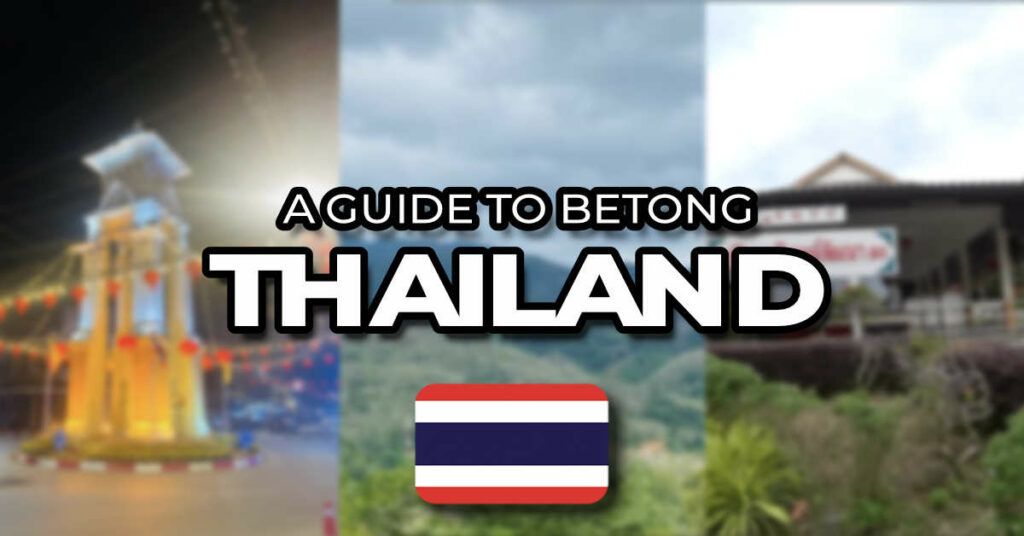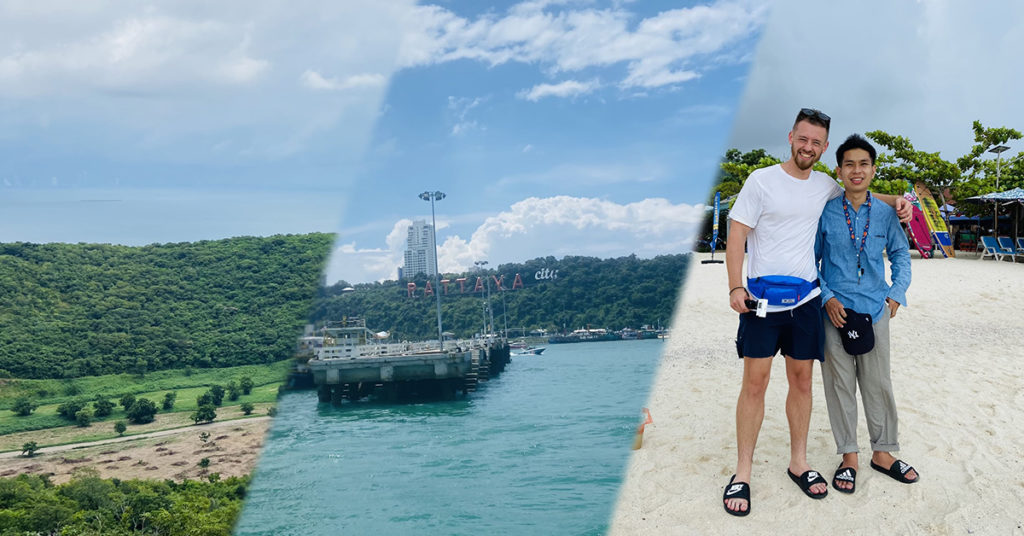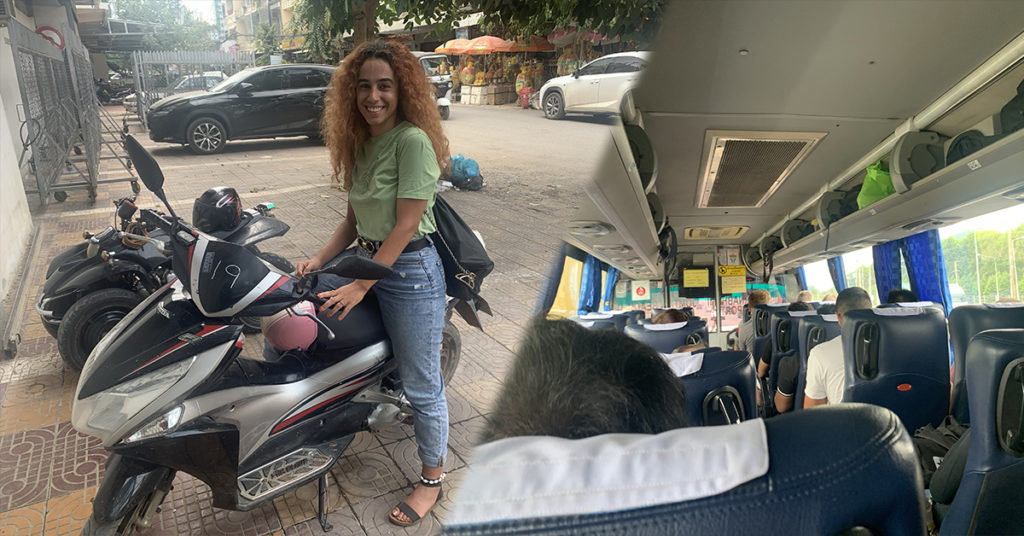So you want to head to the Deep South of Thailand and Betong has come up on your list? You’re in the right hands. As a history fanatic, I explored Betong in-depth, wanting to learn more about the communist history, the tunnels linking with Malaysia, and the history of WW2 invasions. Alongside traveling to the main attractions, exploring the culture, food, the beauty of nature, and more. In this article, I will provide uncovered information you have seen nowhere else online. You will learn a lot about Betong’s history, you will find a secret museum tucked away in a little coffee shop, where a Thai local who has spent his life’s work writing books about the town’s interesting history has a huge collection, the village where the Malaysian Liberation Army’s leader Chin Peng fled too (again not many know about this), and alongside all the usual logistical stuff you need to know to get around, stay, etc.
This is not your standard “best things to do in Betong!!!” post. It’s a peel-back-the-layers travel guide that explores the local gems, no one bothers to spend the time to look for.
Why trust me? I spent 4 months traveling all over Thailand by train, motorbike, and more; on a journey to learn more about the very new state’s history (changed in 1939), focussing on WW2 and communism.
Here’s a video I made about my journey through the Deep South of Thailand, Betong was the 3rd stop in the journey:
Attractions & Things To See (At A Glance)
Please select the tab you’d like to look at below. Each tab includes a description alongside a gallery of images or videos you can view to see what the attraction is like.
Secret Museum Am Puea Betong
Called “Am Puea Betong” in Thai (อำเพอเบตง), here you’ll find a cafe with art plastered along the walls and 150 year old photos and antiques that explain the history of Betong.
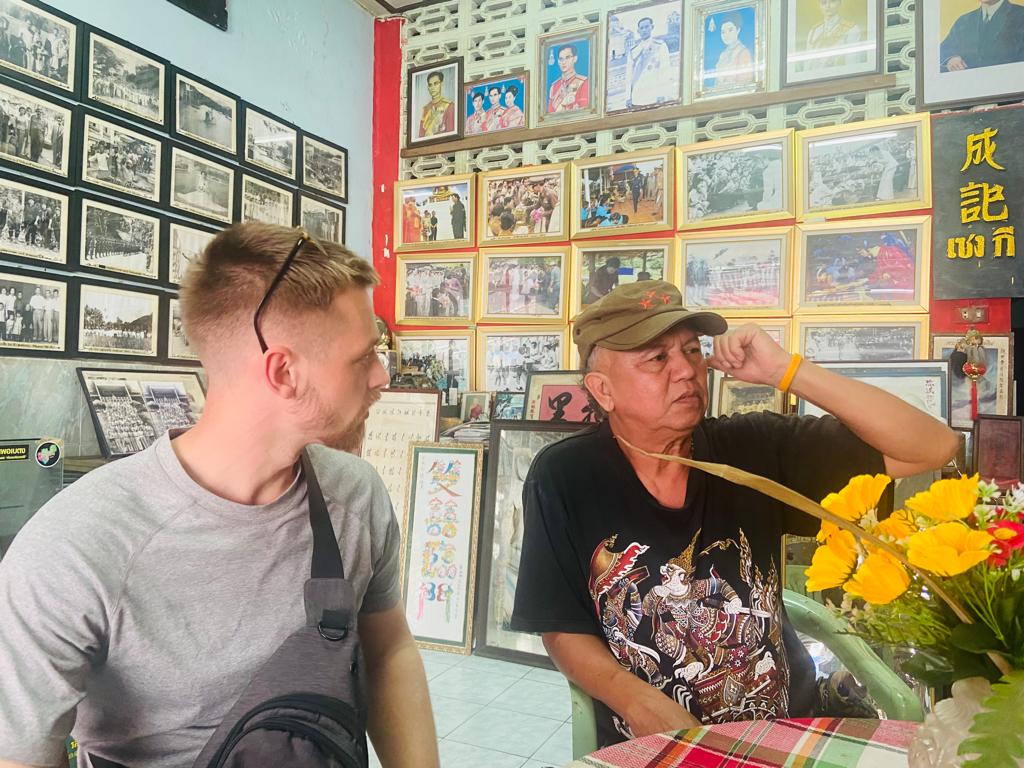
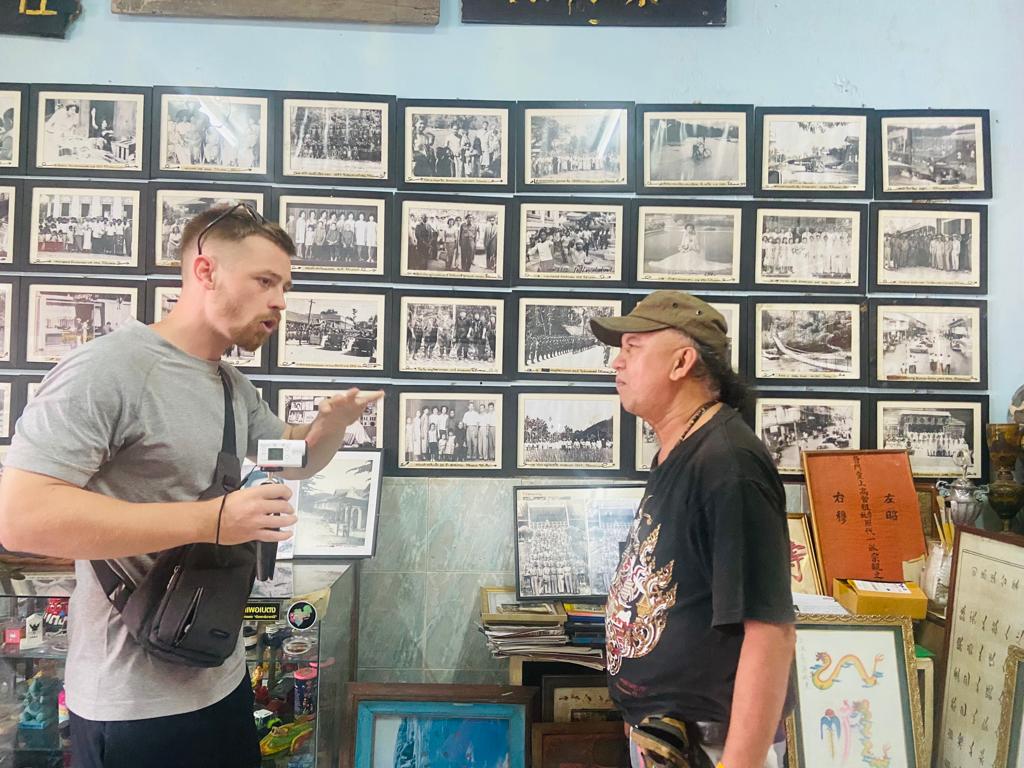
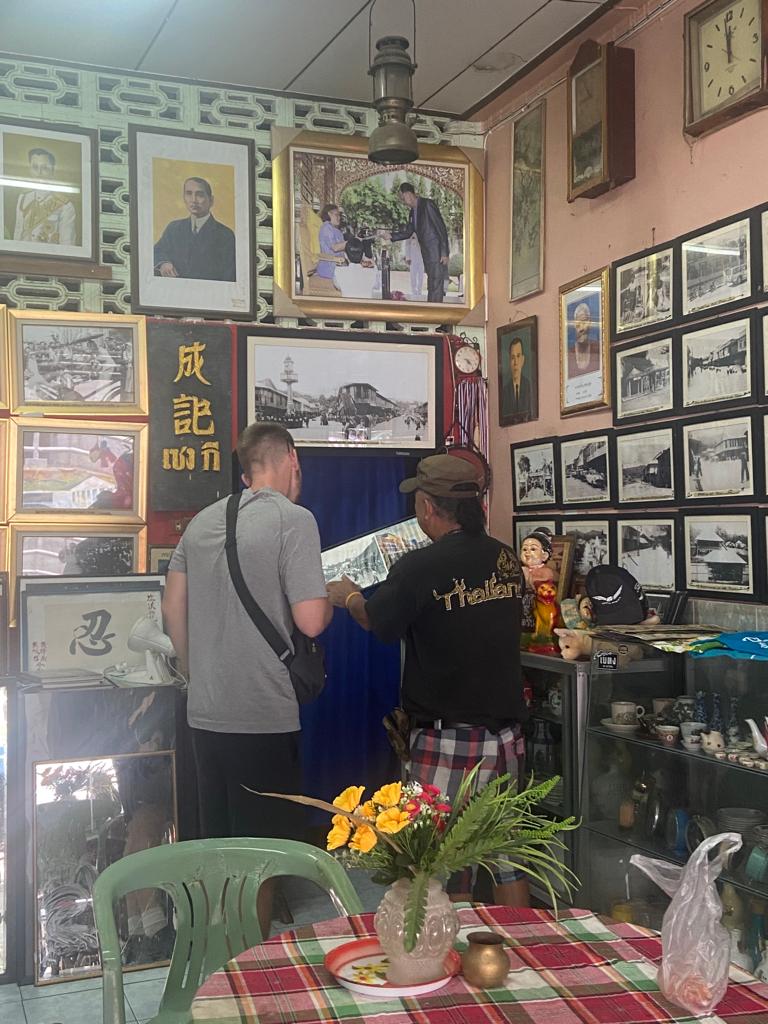
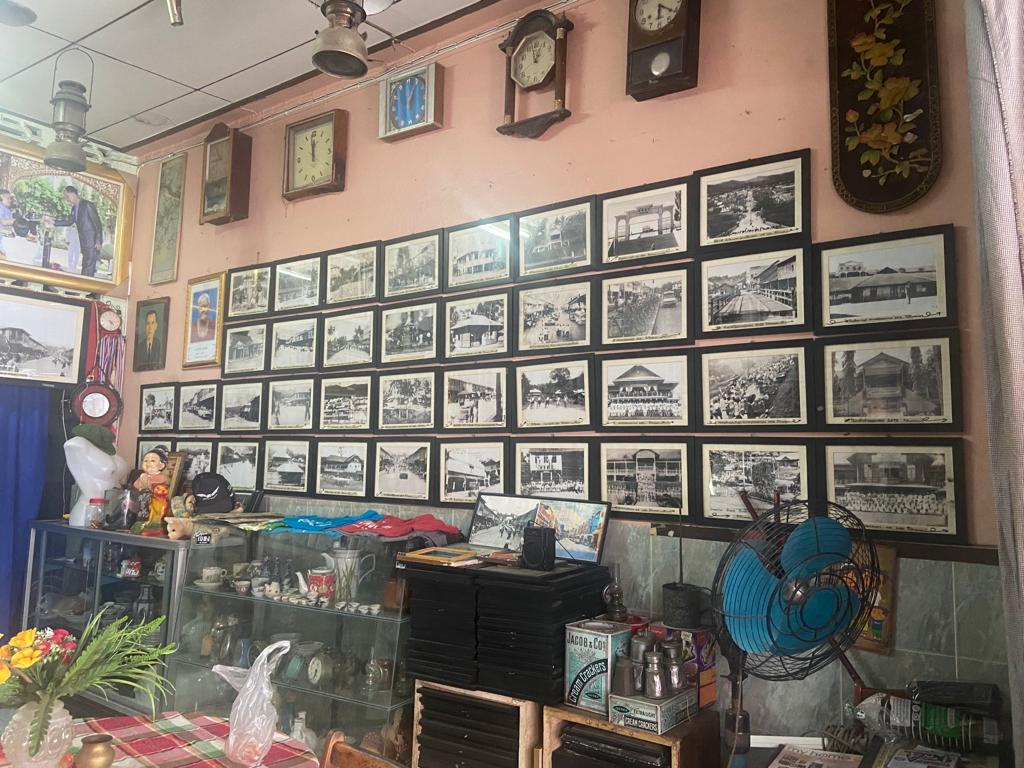
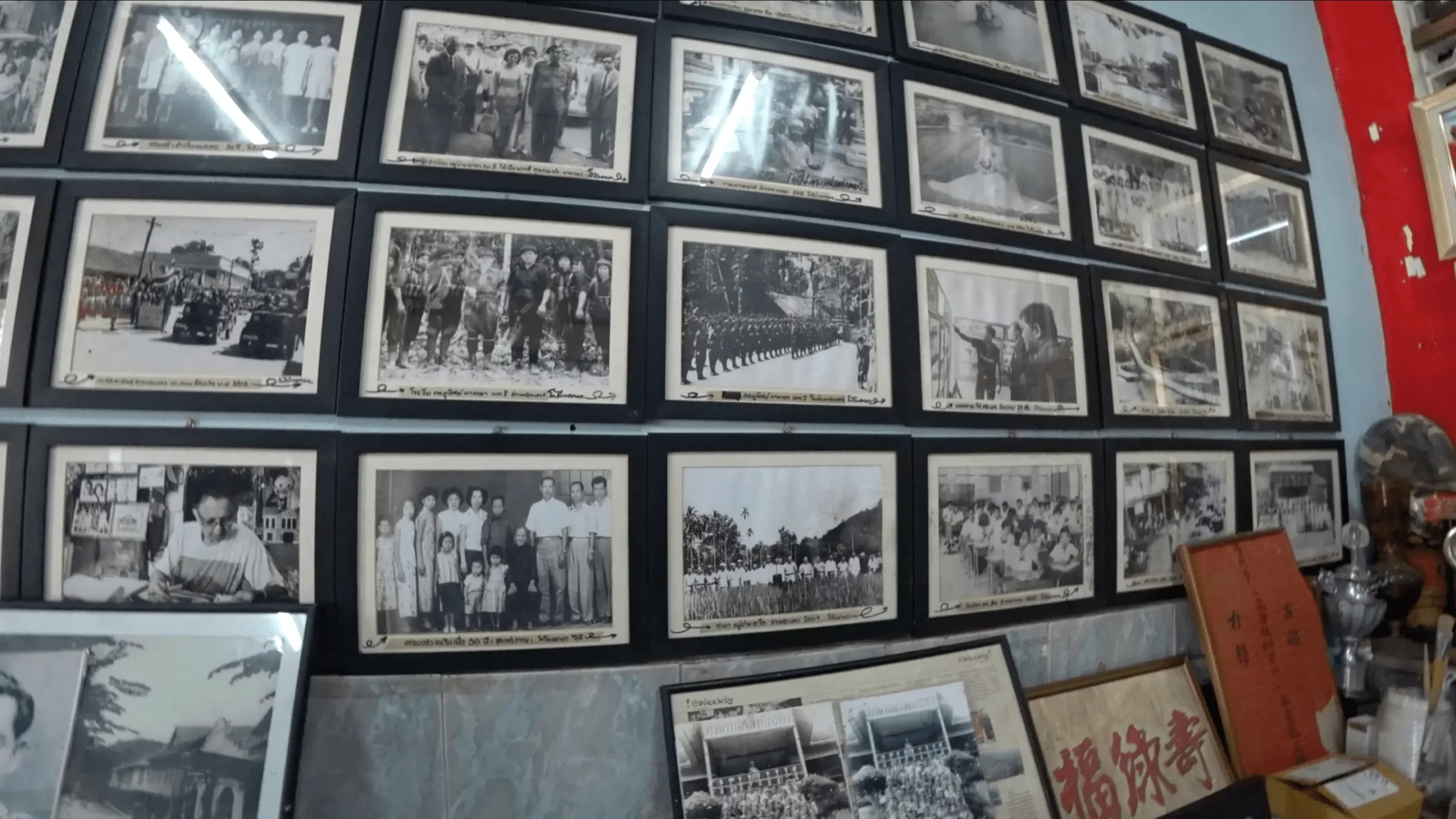
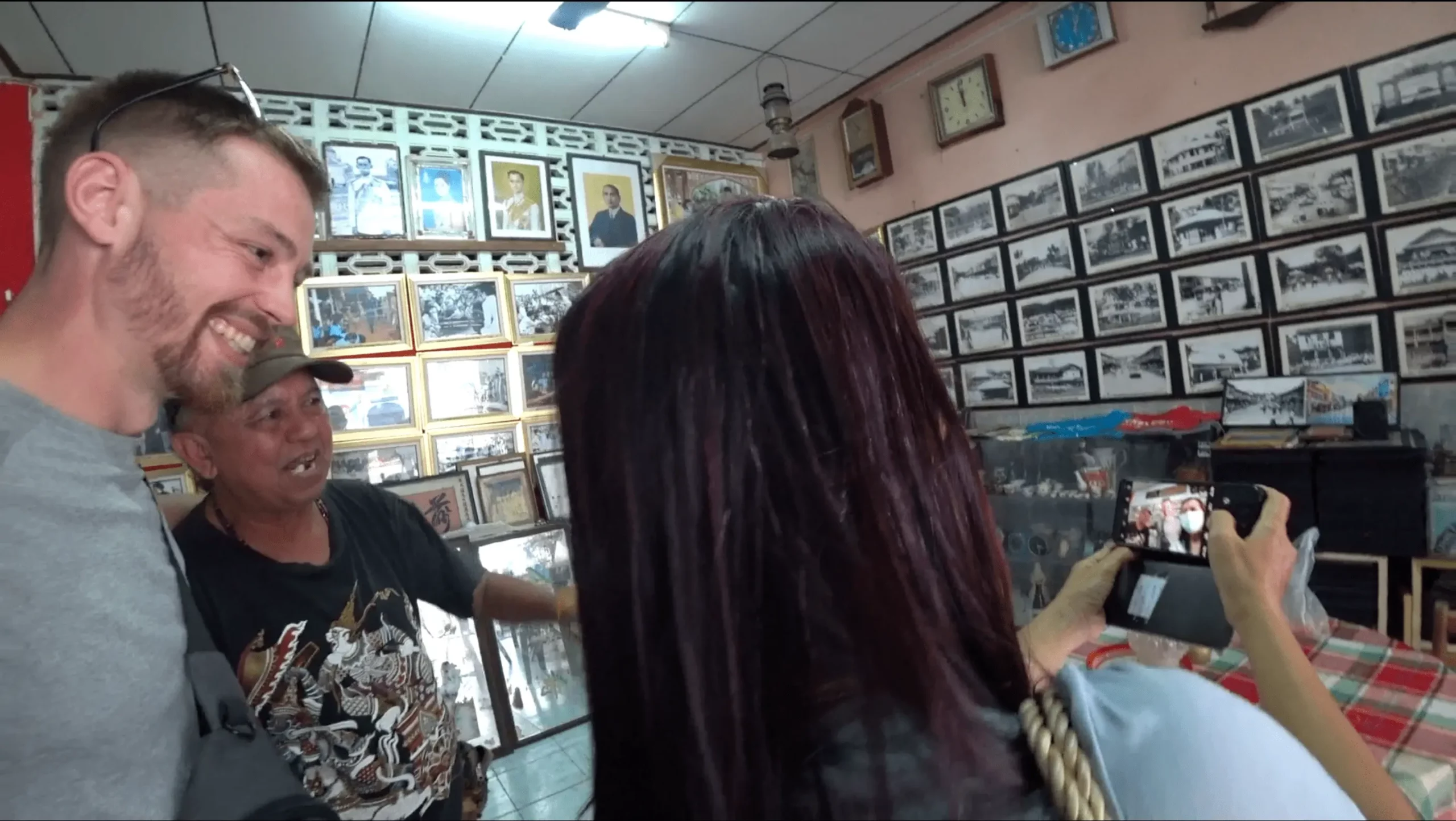
The owner is a published author who has written about the history of Betong and has been given a medal by the Thai princess. If you can speak Thai, you will learn a lot. If not, there is a guest house nearby called “insert name”. This is the lady who helped translate the bits I didn’t understand.
He also said he’d take me on a tour for 600 baht for the entire day, but unfortunately, there was a miscommunication and it never went through. I’m sure if he asked he’d do the same for you. He was extremely knowledgeable.
Peace Village, Betong
A small development village near Piyamit Tunnels that most tourists miss. Here you’ll find the old barracks of the Malaysian People’s Army members. During 1952 they fled to different parts of Southern Thailand, including this small village in Betong, now named “Peace Village”, (but on google maps as Chulalongporn Development Village 10″.
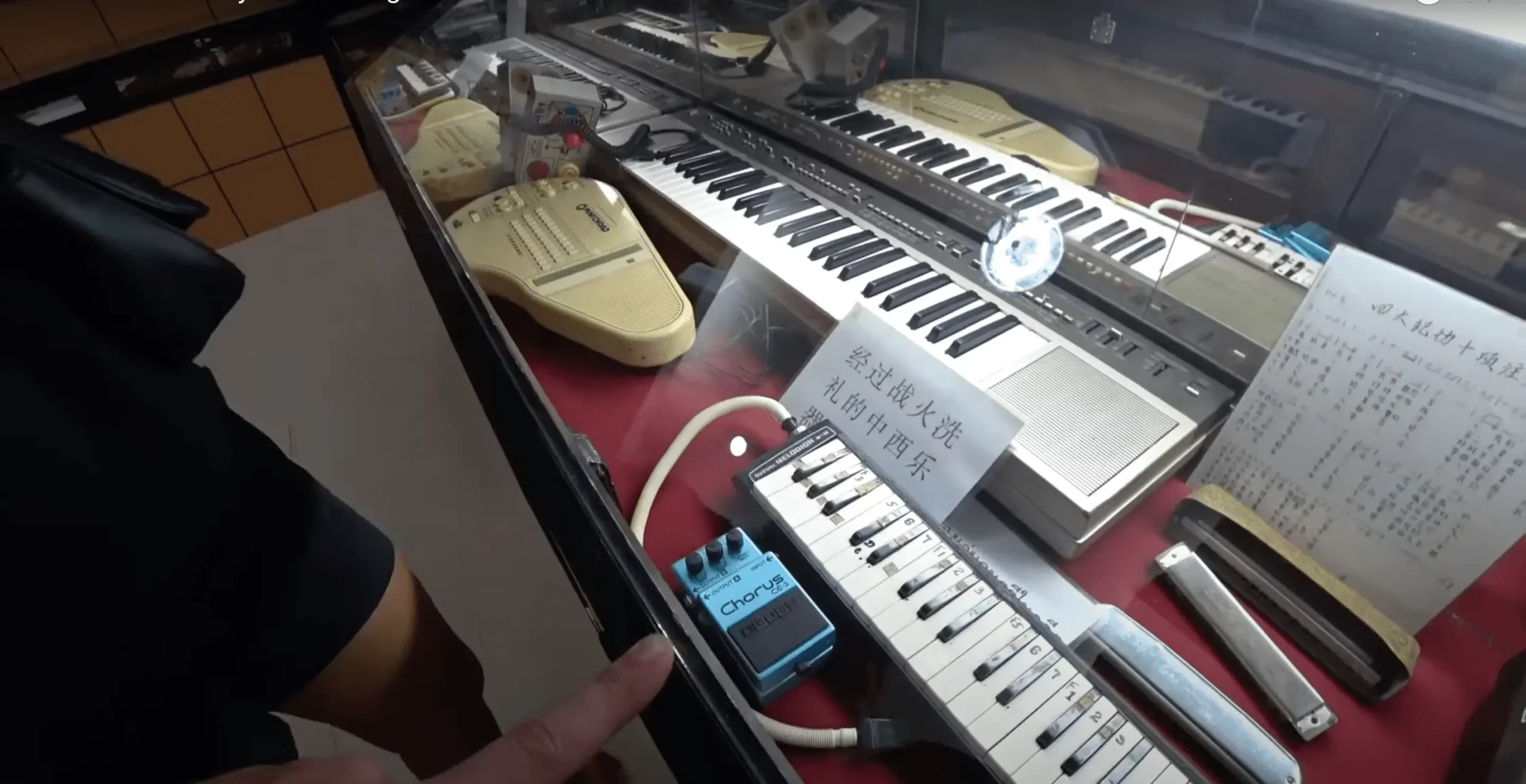
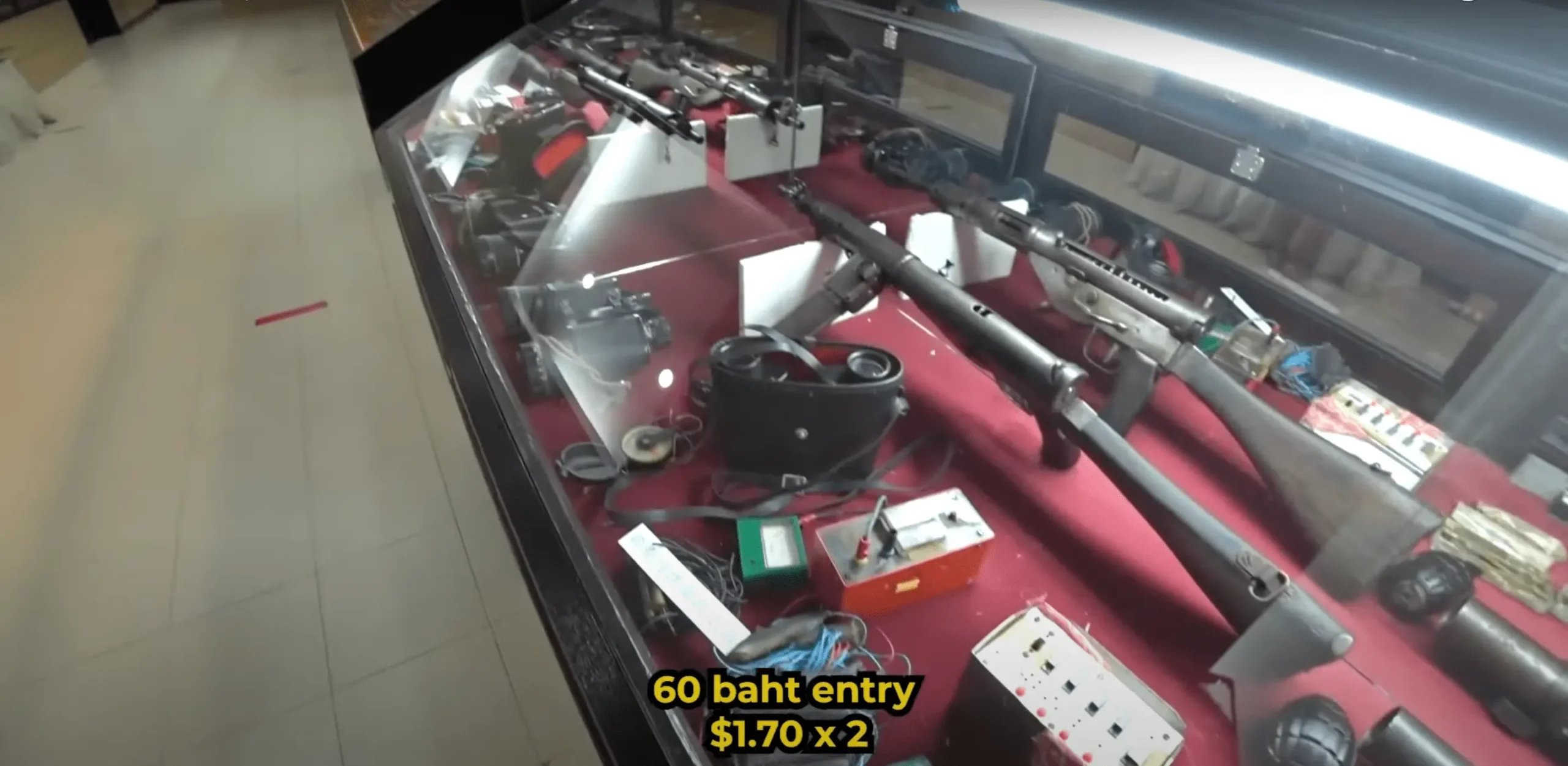
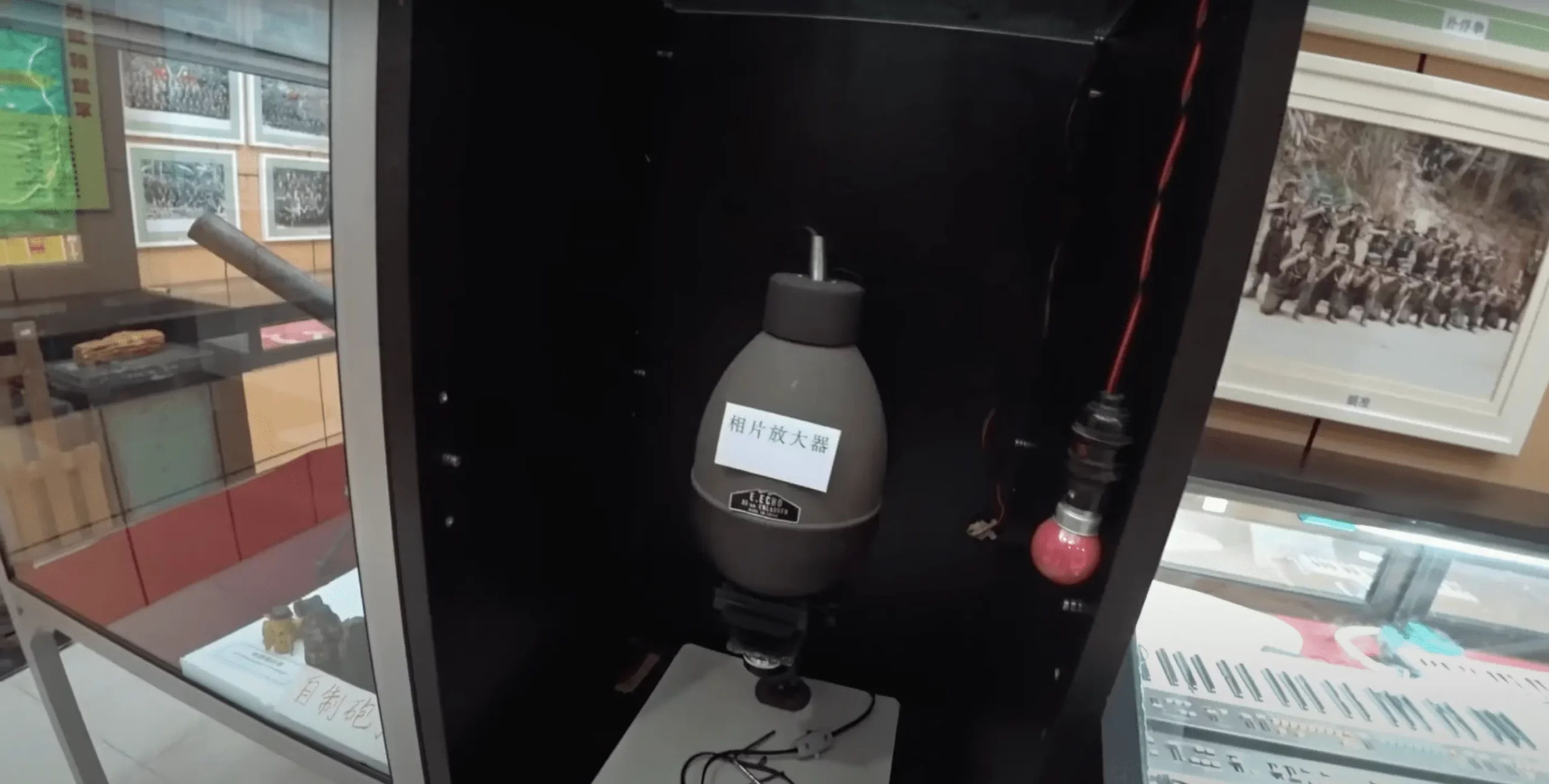
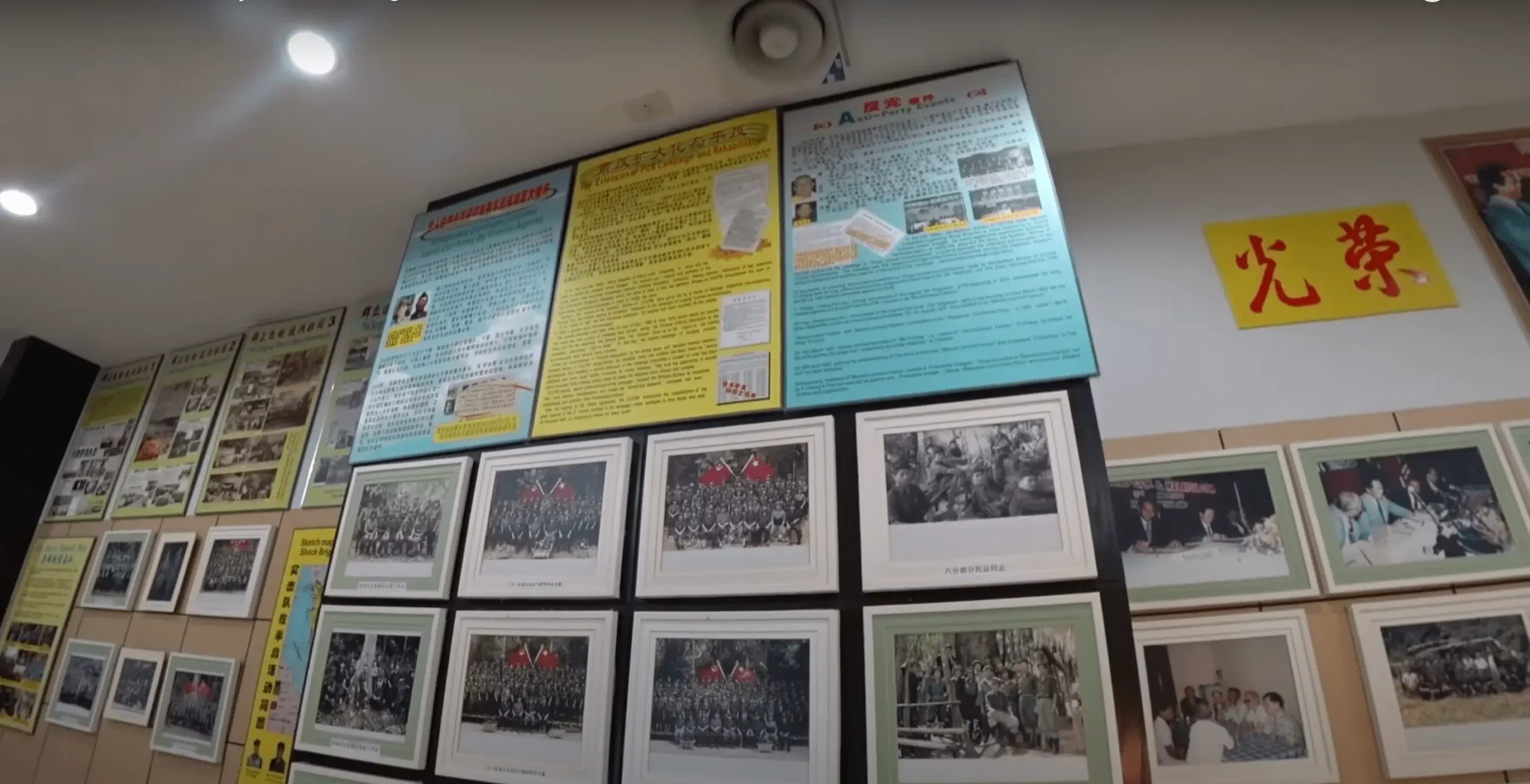
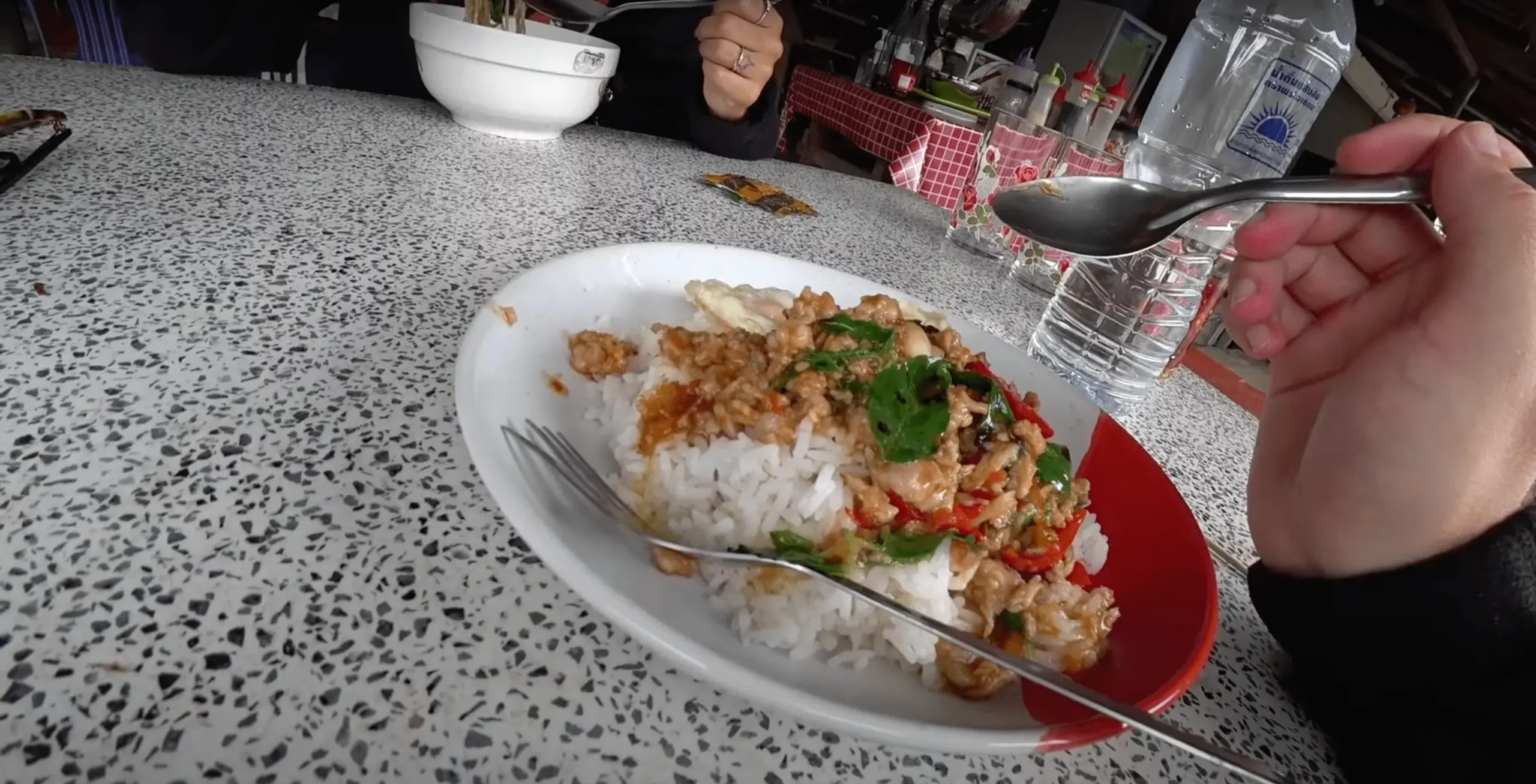
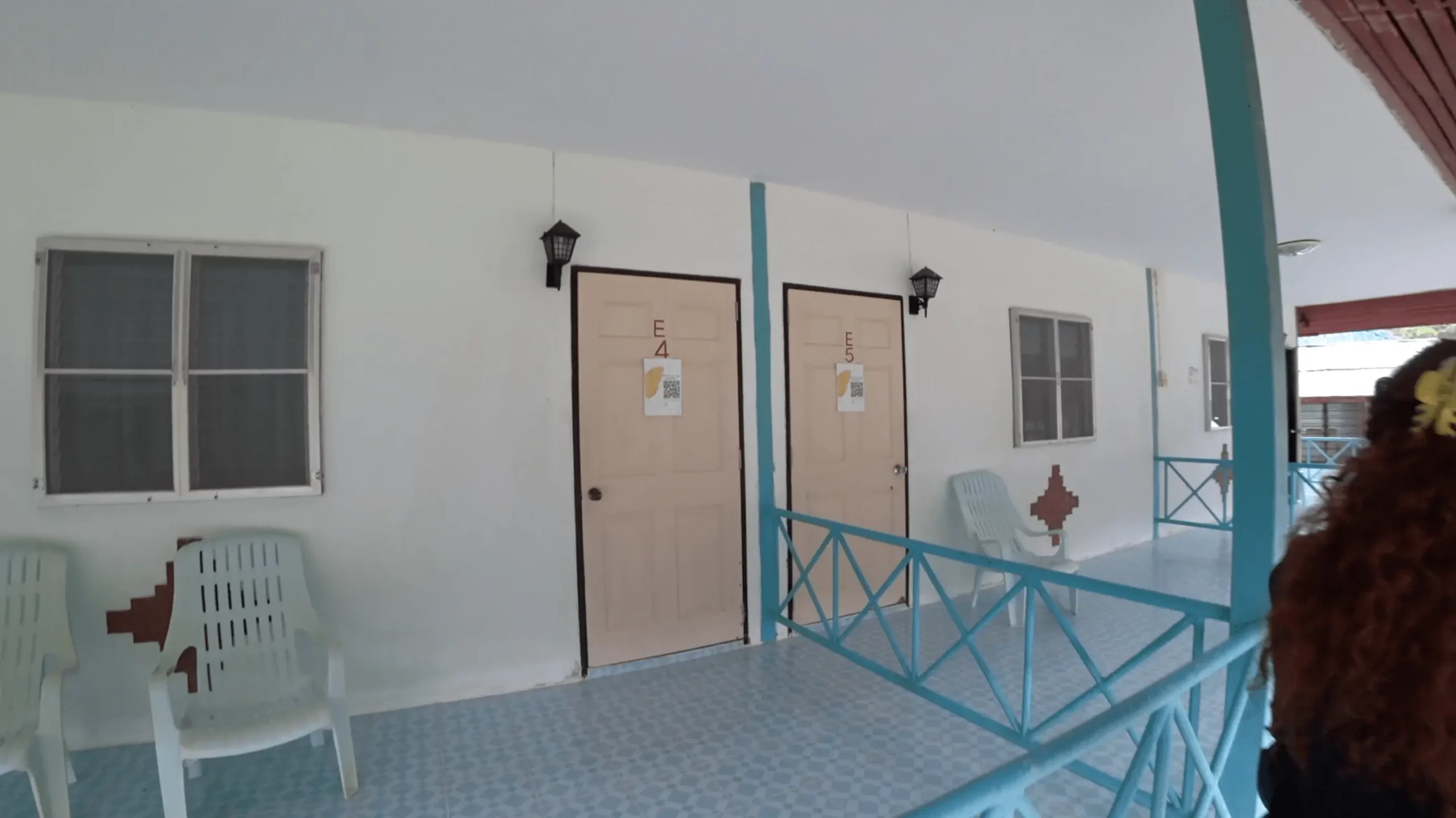
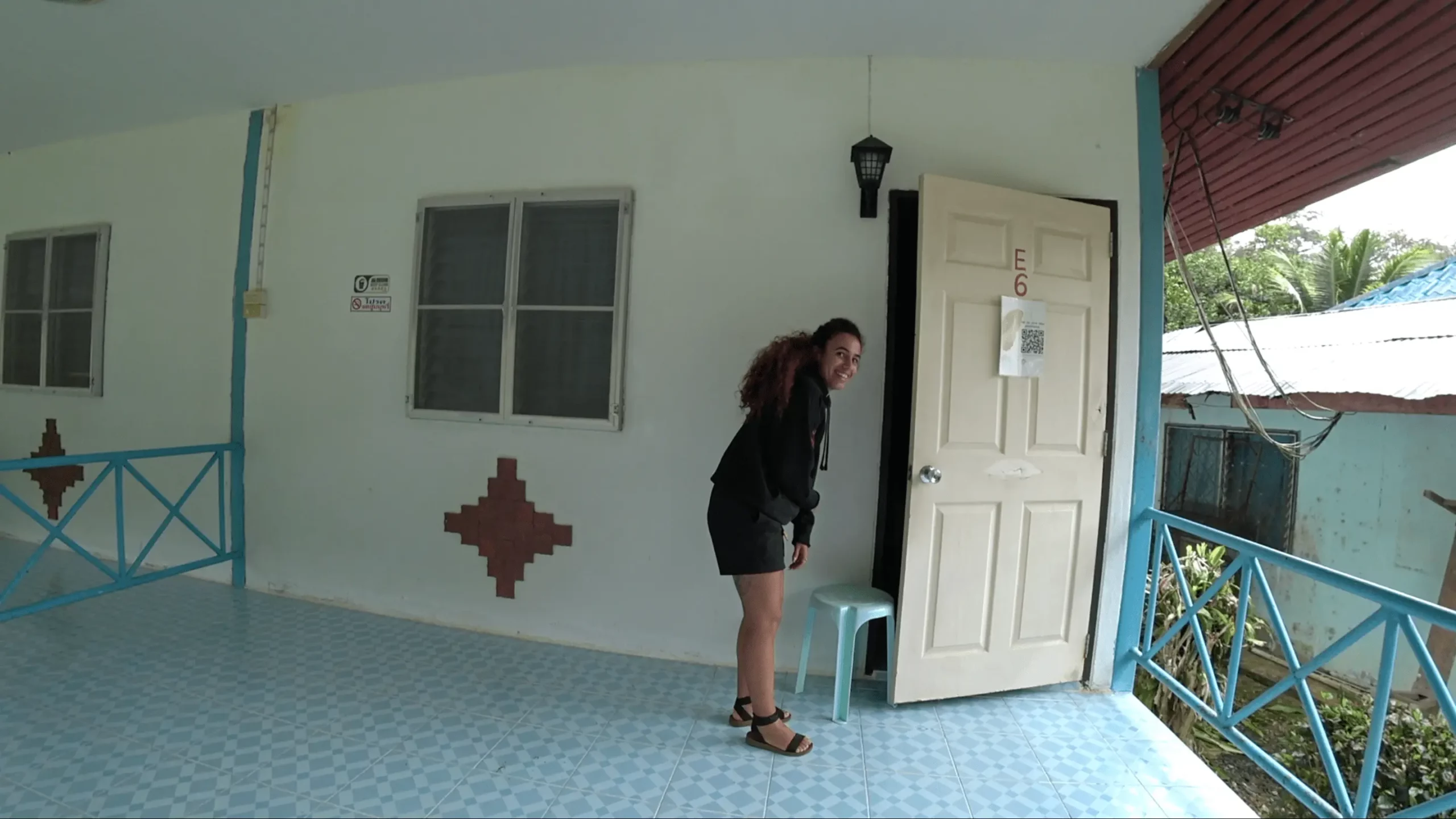
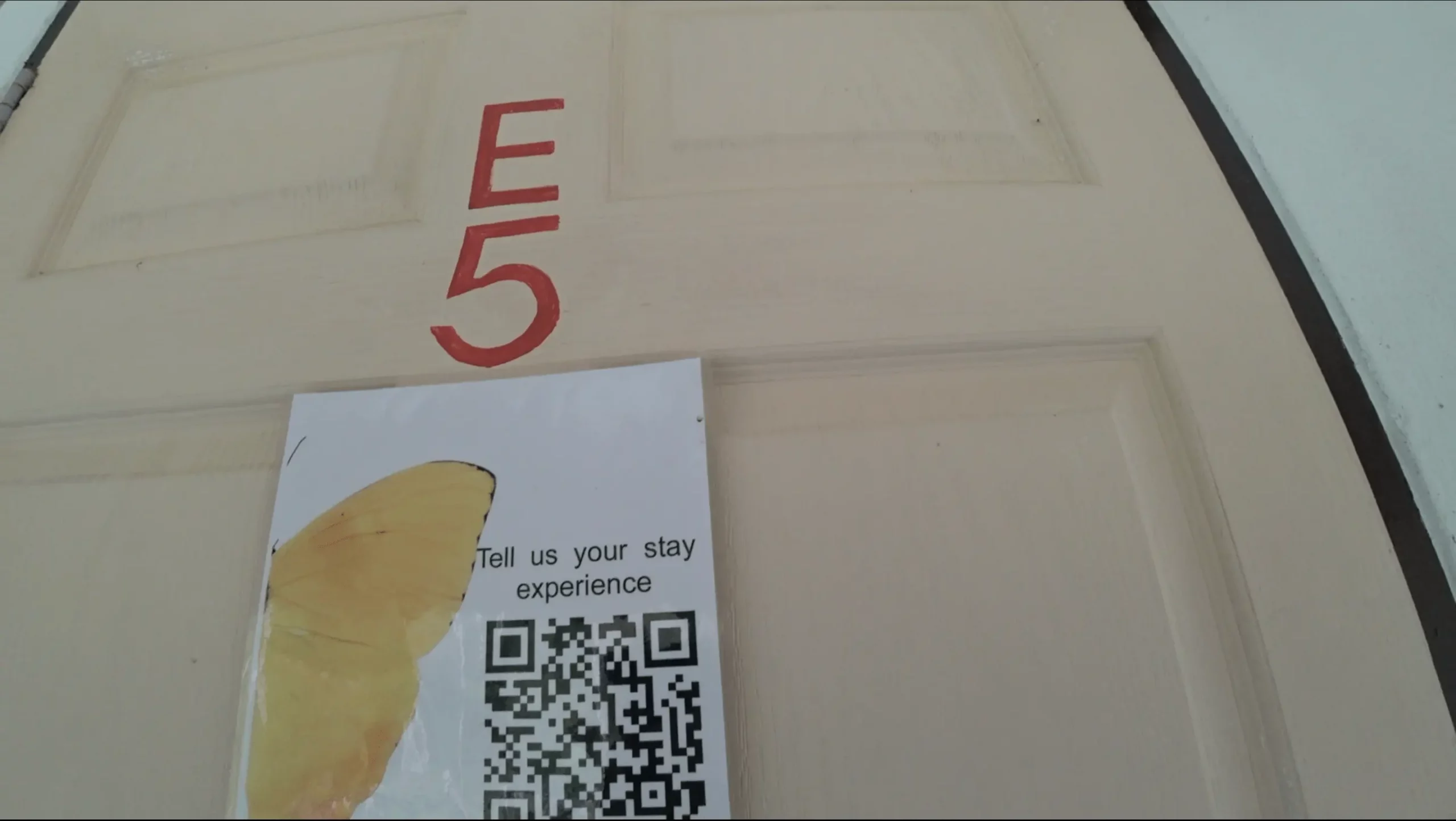
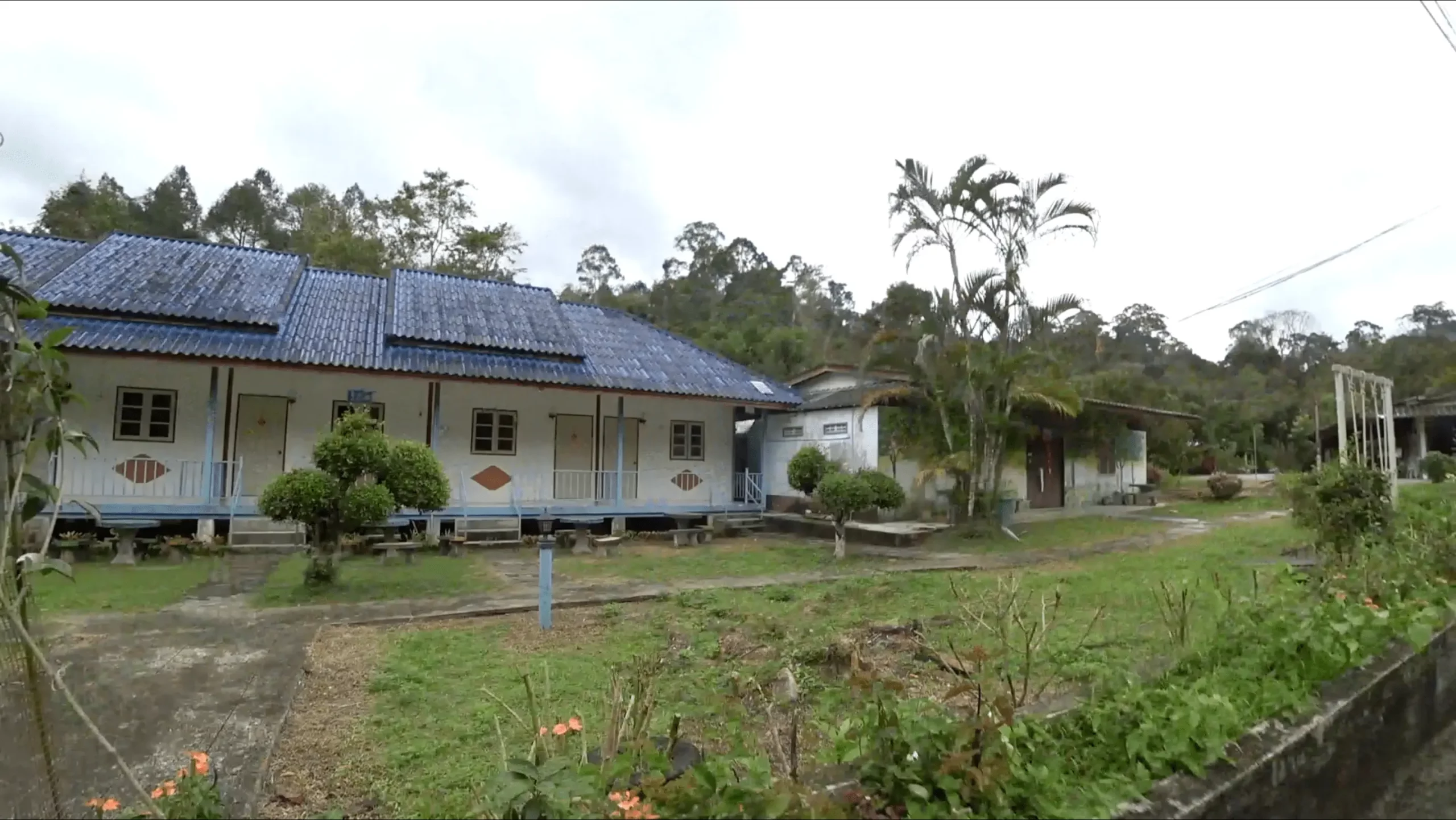
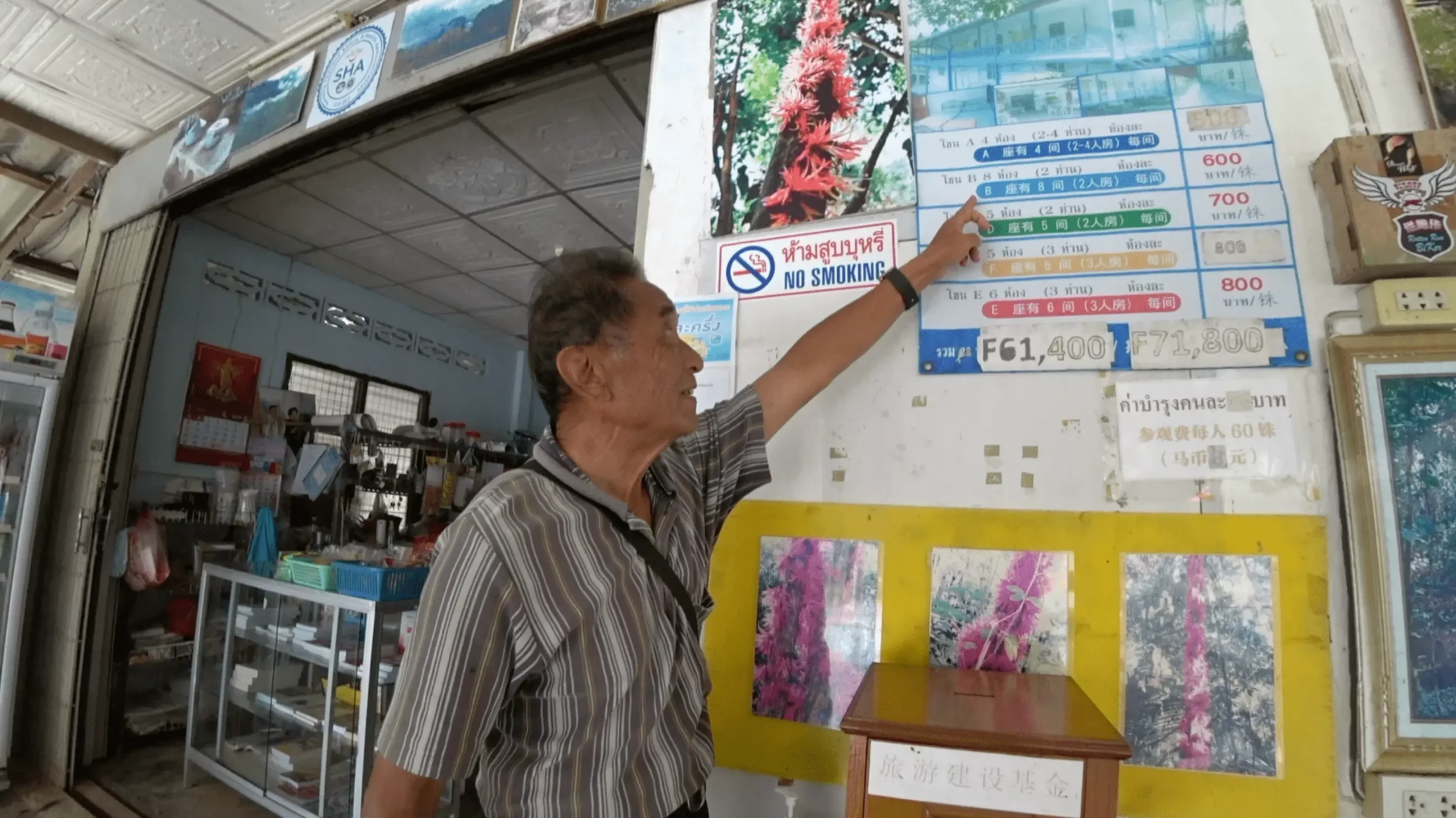
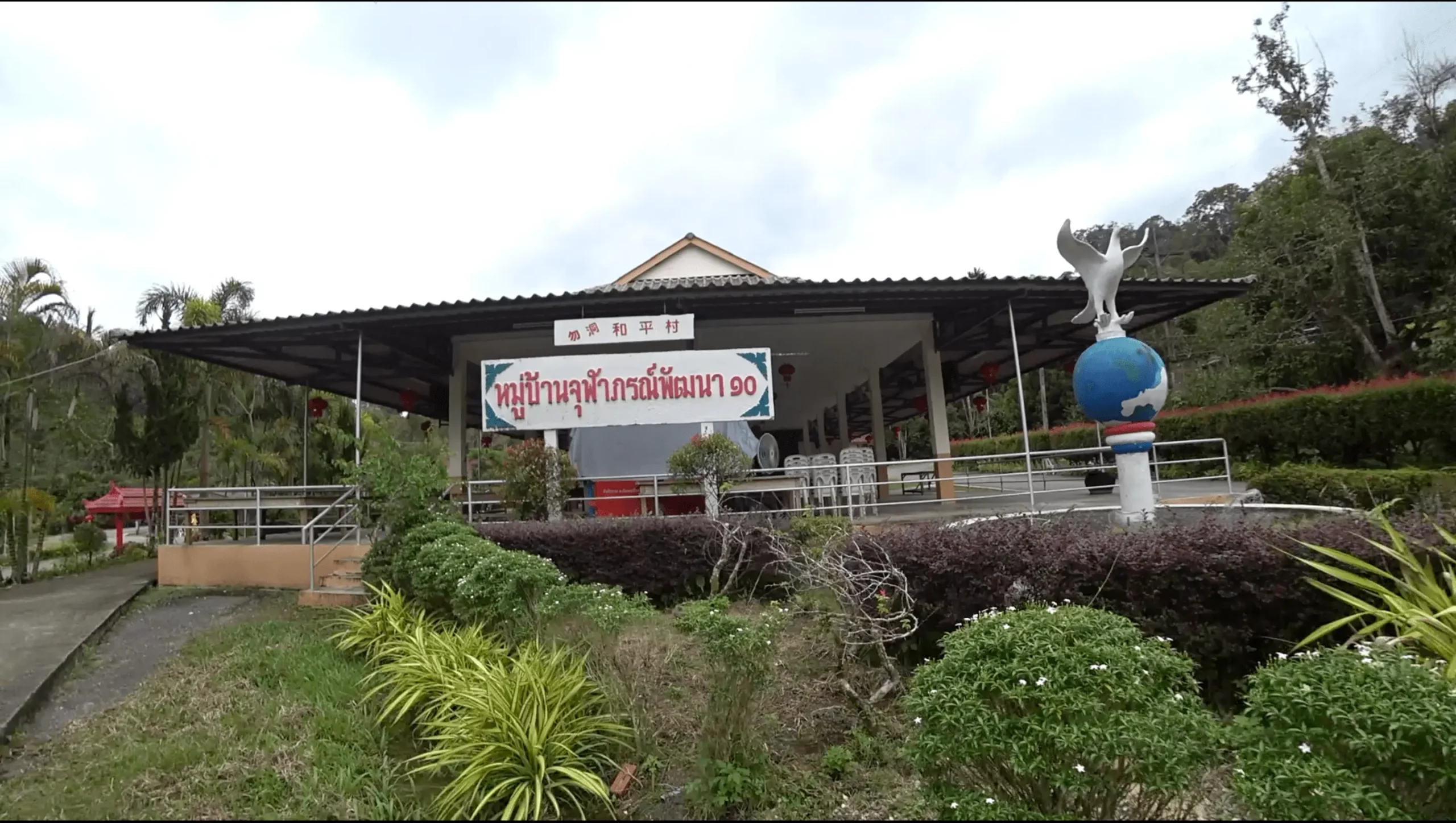
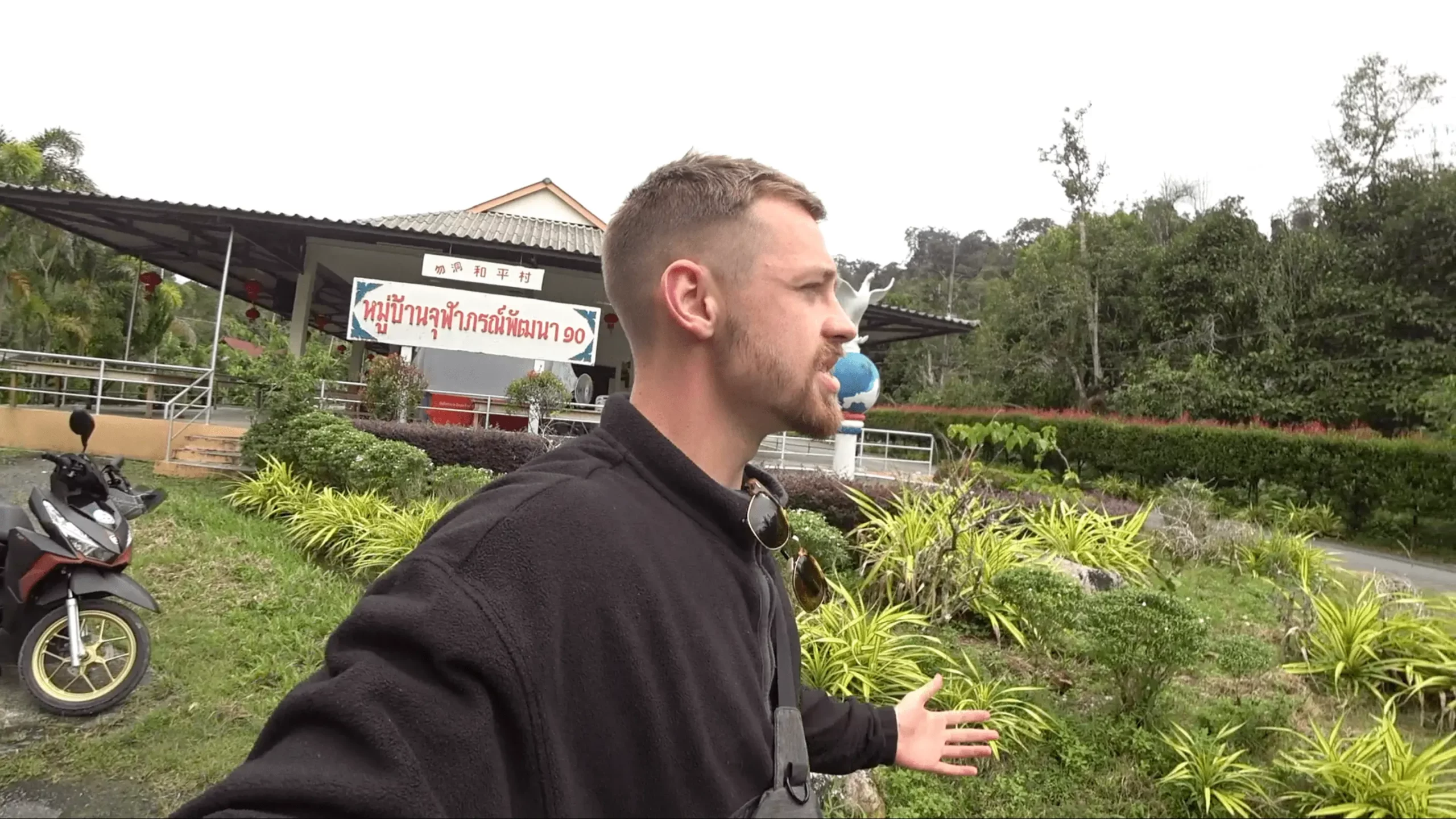
There is a small museum on-site here which costs 60 baht entry, and you can even stay the night in the barracks as they’ve converted them into hotels. It is surrounded by nature, tucked in between mountains, and has some gardens and activity areas on-site.
The owners are of Malaysian descent. They were most likely black-listed from re-entry to Malaysia after the Malaysian government banished all communists from re-entering the country. Since this has been lifted, many of the Malay Communists opted to stay in Peace Village (which you’ll find here in this location).
Although there were Chinese communists in Southern Thailand, very few were, with most of Chinese descent being situated in the North, with many having immigrated and become citizens in Thailand.
Very beautiful, extremely interesting spot if you’re into the history of South East Asia. Most people have no idea it’s here either! I got the information by chatting to a local policeman who was stunned that I knew Thai and about the history of Betong.
Piyamit Tunnels
Piyamit tunnels are a series of tunnels built by Malaysian communists in 1976 that were used to hide the MLNA members from Thai and Malaysian forces. They were also used as bomb shelters and had medical, and dental bays alongside schools, communist education camps, and even sports areas.
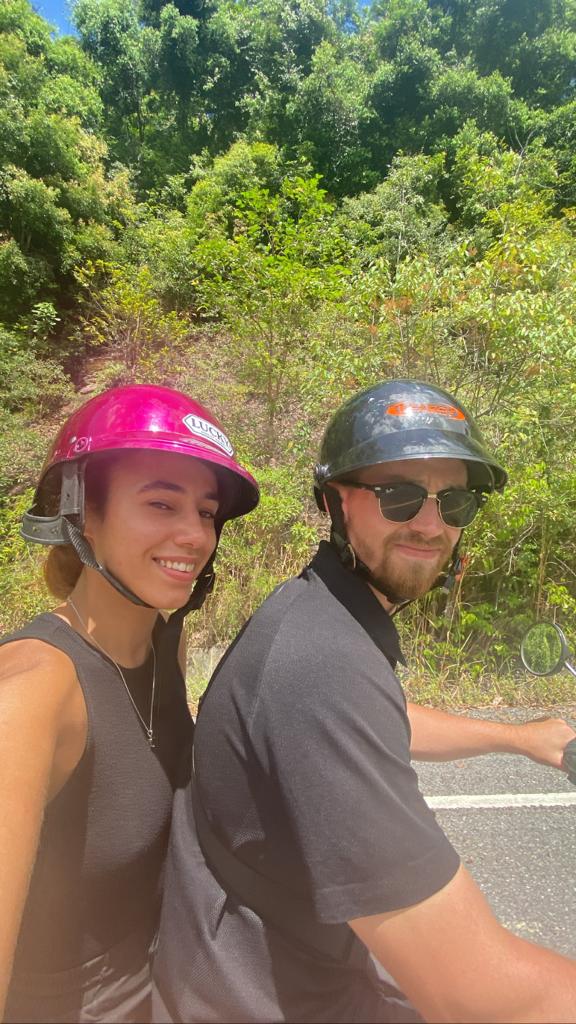
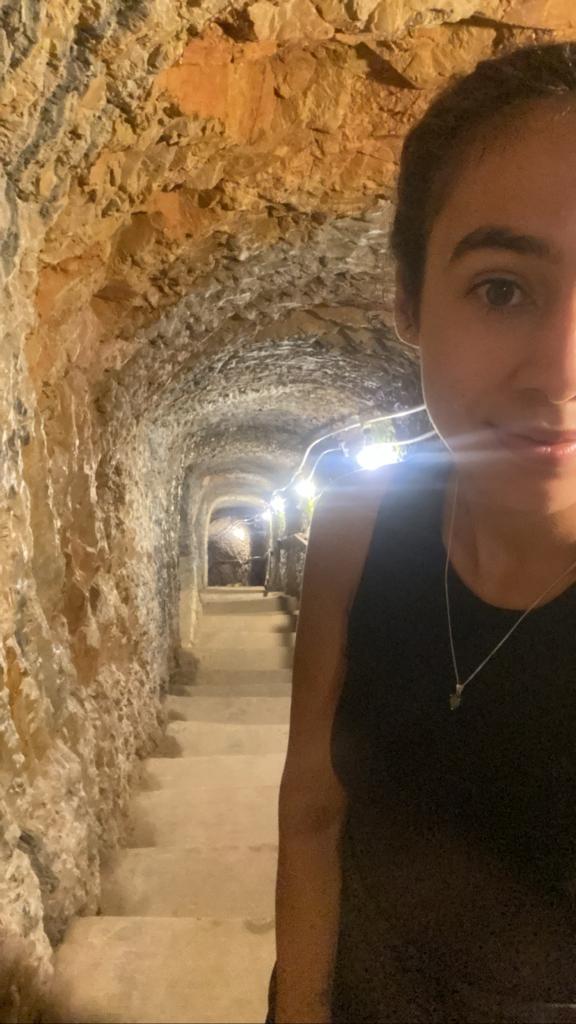
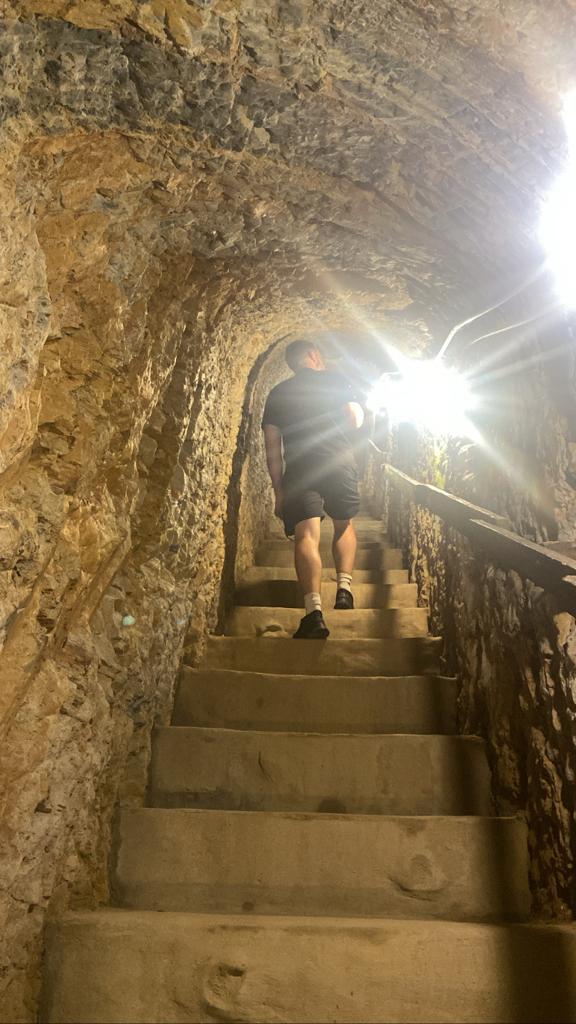
This is a must-see here in Betong, and it’s incredible to see how some MLNA members lived here during the Thai cold war. The tunnels were built in a matter of 3 months and were built through the mountain. They are 1km long.
Entry is 60 baht.
Something really interesting I learned here was about smoke ovens. The communists would use a special system to cook, so that the smoke coming from their cooking would blend in and look like mist from the mountains, hiding from any helicopters flying over, or bomb raids.
There’s a great museum on site that has all kinds of old items they used to live here. There are even some USSR artifacts too!
Employees are dotted around the tunnels and (if it’s not too busy) help to explain the history and what the communists used each tunnel for. I’m pretty certain some of them are ex-MLNA members, but I’m not entirely sure.
Gunung Village
Driving 30 km drive down the 410 road from Betong, you’ll find a village called Gunung. This village is extremely friendly and a very interesting insight into Thai-Muslim life away from urbanization. There is a beautiful Buddhist temple (ironically considering most are Muslim) and a Mosque located here. You can also find the famous Gunung Sea Mist mountain viewpoint, Tae Pue Bridge, Ayerwang Skywalk and King Rama IX waterfall located nearby.
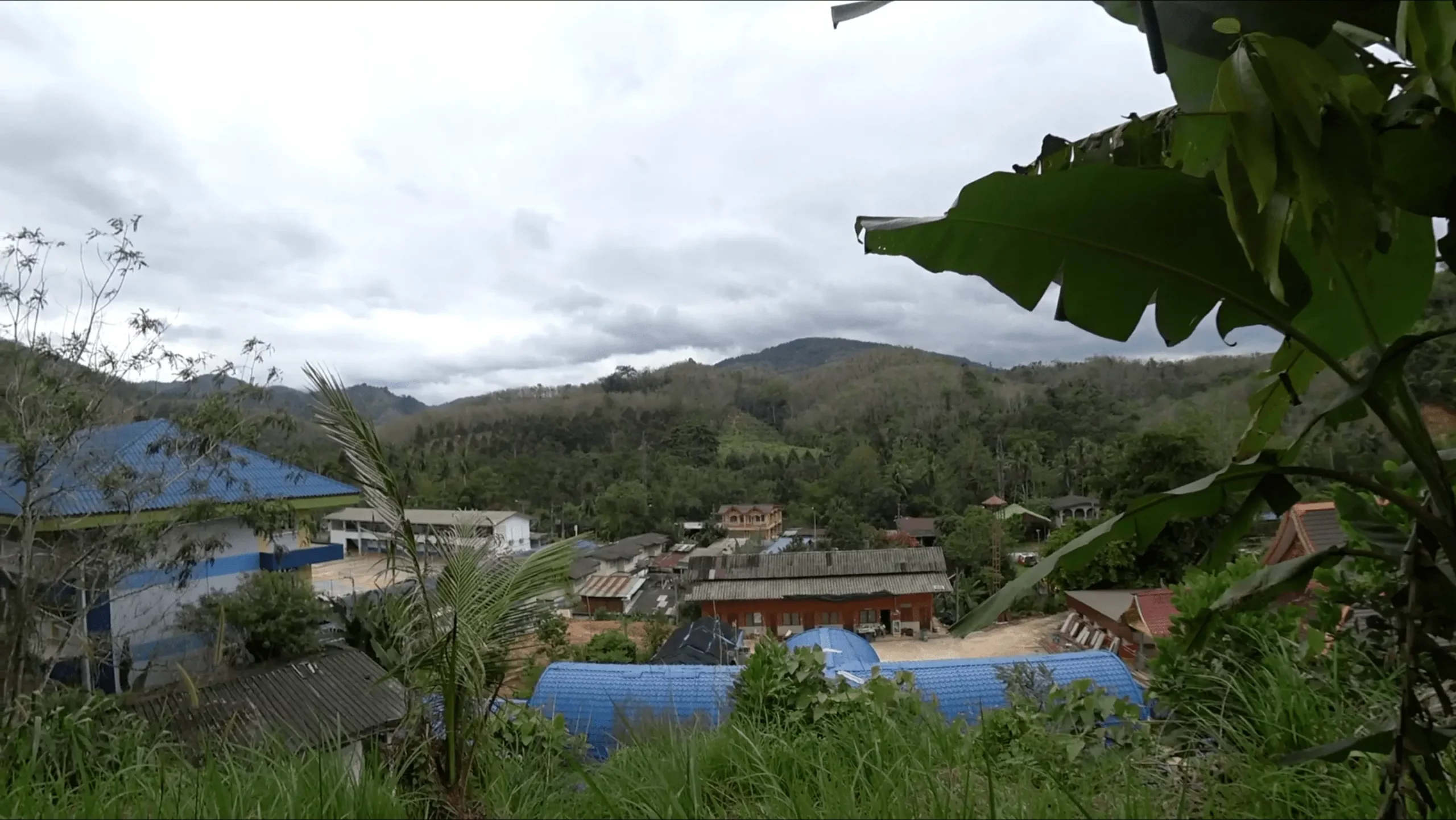
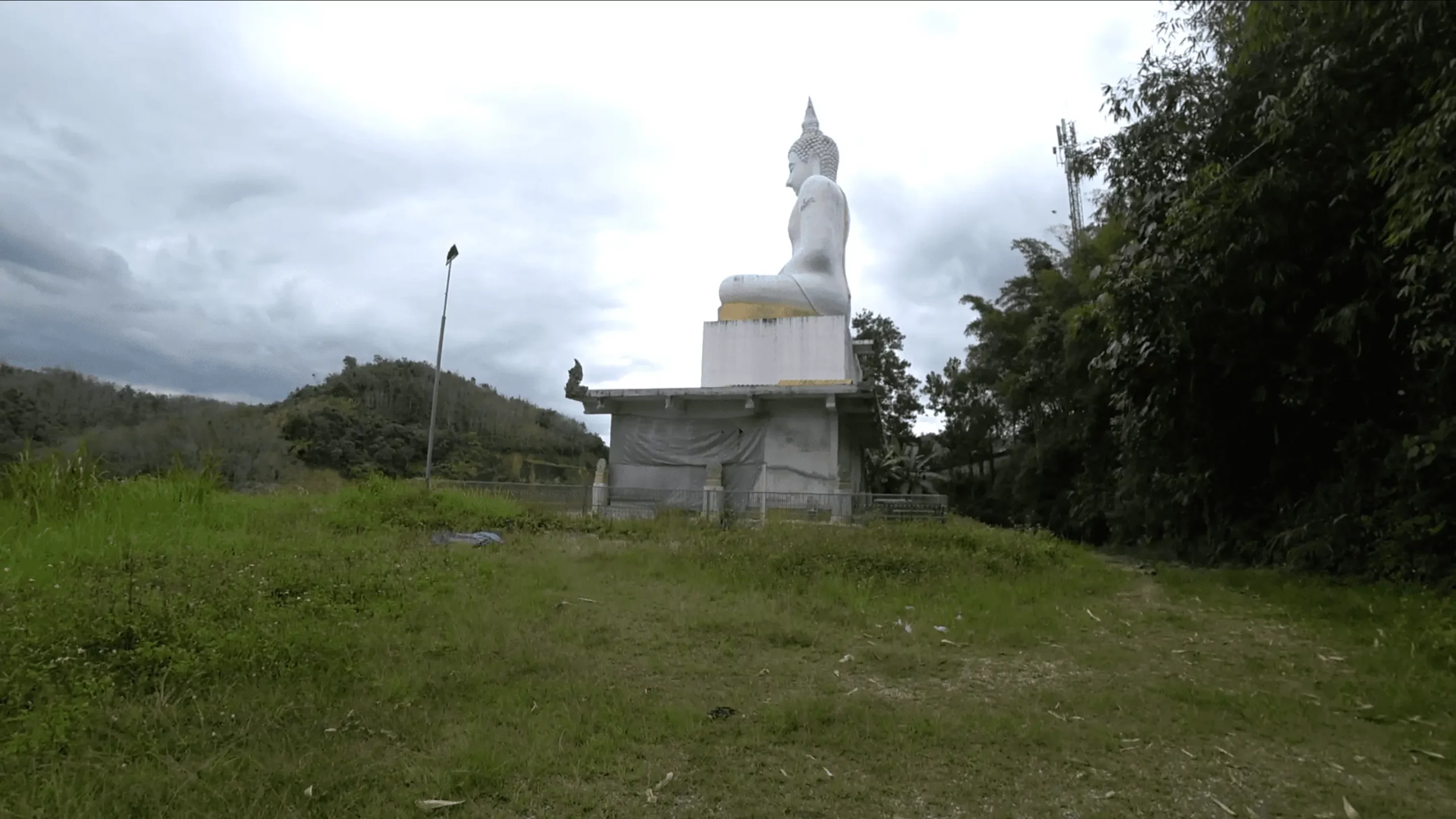
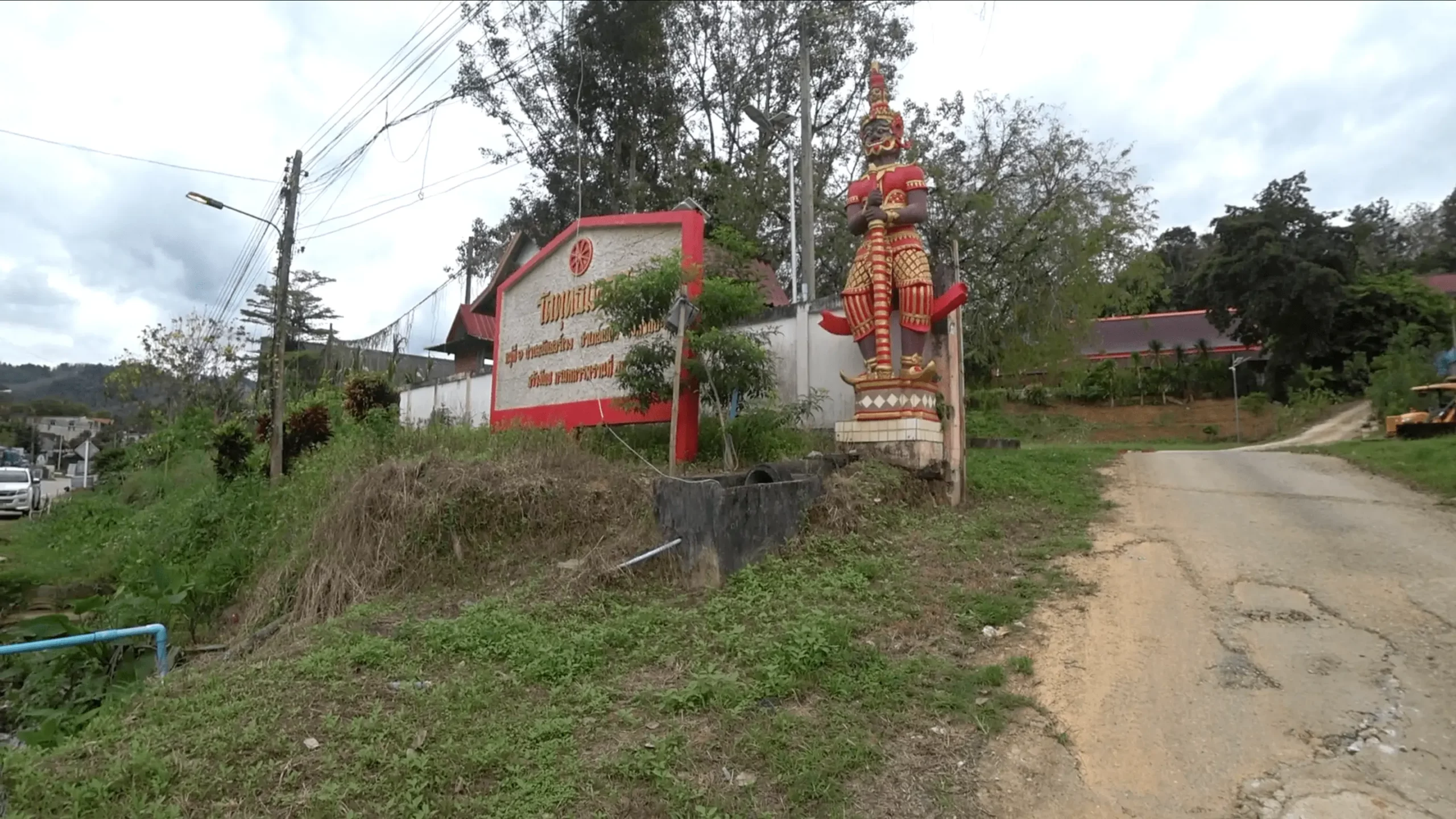
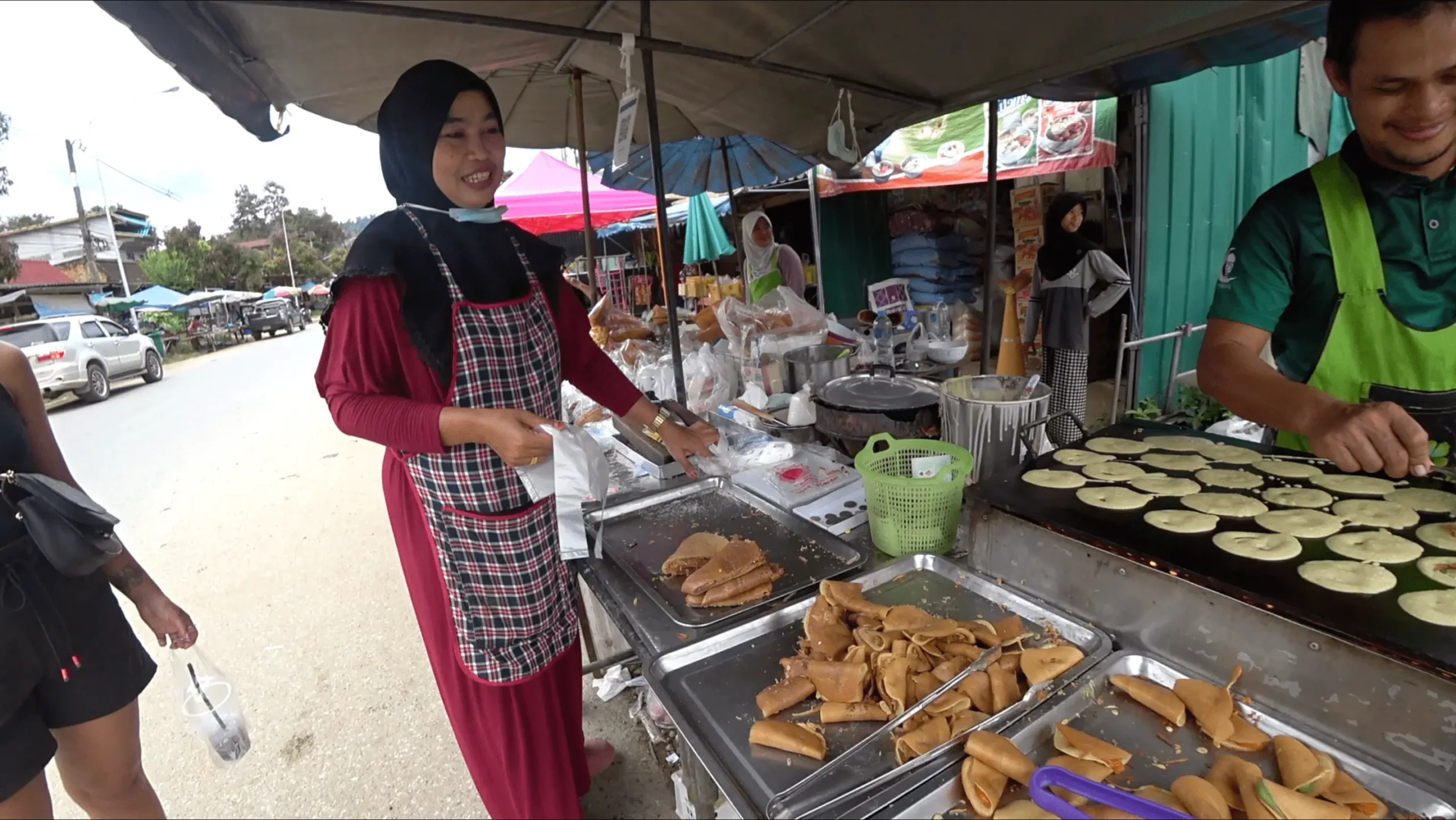
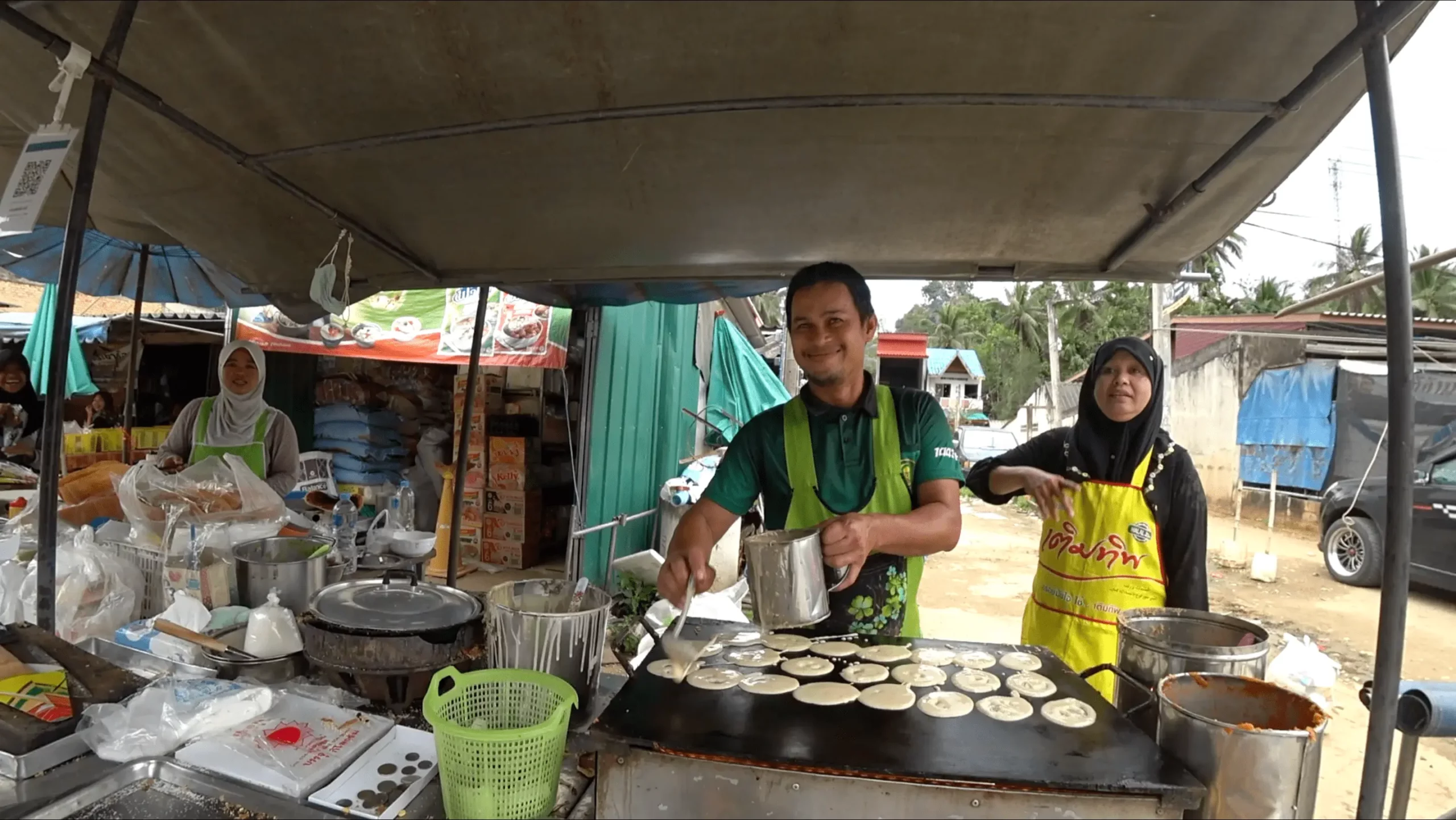
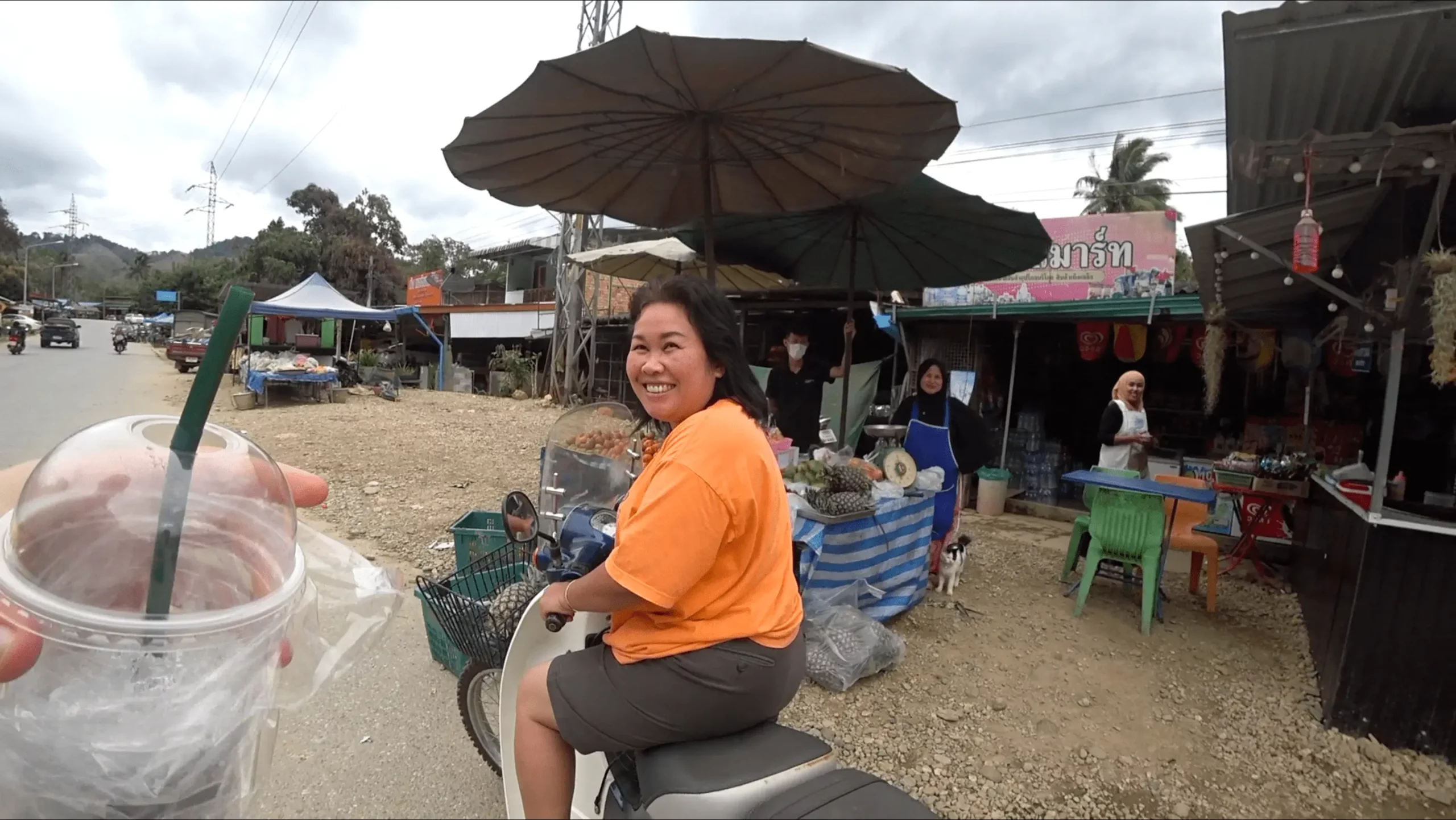
I’d personally recommend staying in one of the guesthouses (please do not expect any fancy hotel here) overnight to get a full experience of the area and to visit the local viewpoints.
The drive through these mountains is up there with one of the most beautiful drives I’ve had in SEA, Laos’ Vang Vieng only just topping it. Highly recommended!
Also, if you come here find the man selling the green oranges… they are the sweetest oranges I’ve had in my life. They look horrible and rotten on the outside, but are deliciously juicy on the inside.
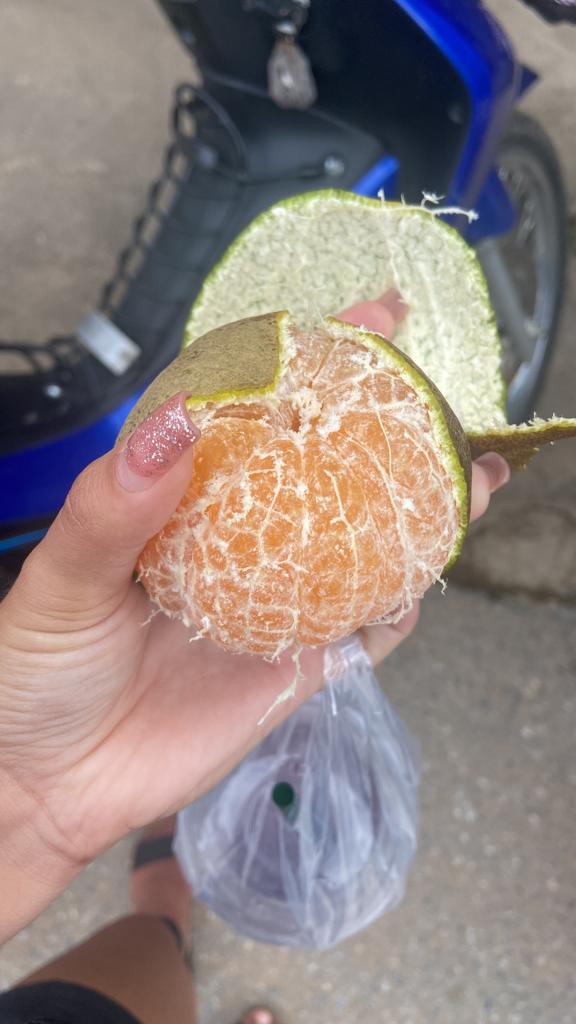
Skywalk
Probably the most touristy thing here is the Skywalk. It’s in the Betong district but is closer to Yala. To get here you’ll have to organize transport. It’s close to Gunung village, so it’s a good idea to visit here, get yourself a hotel/guesthouse then explore the area’s beauty.
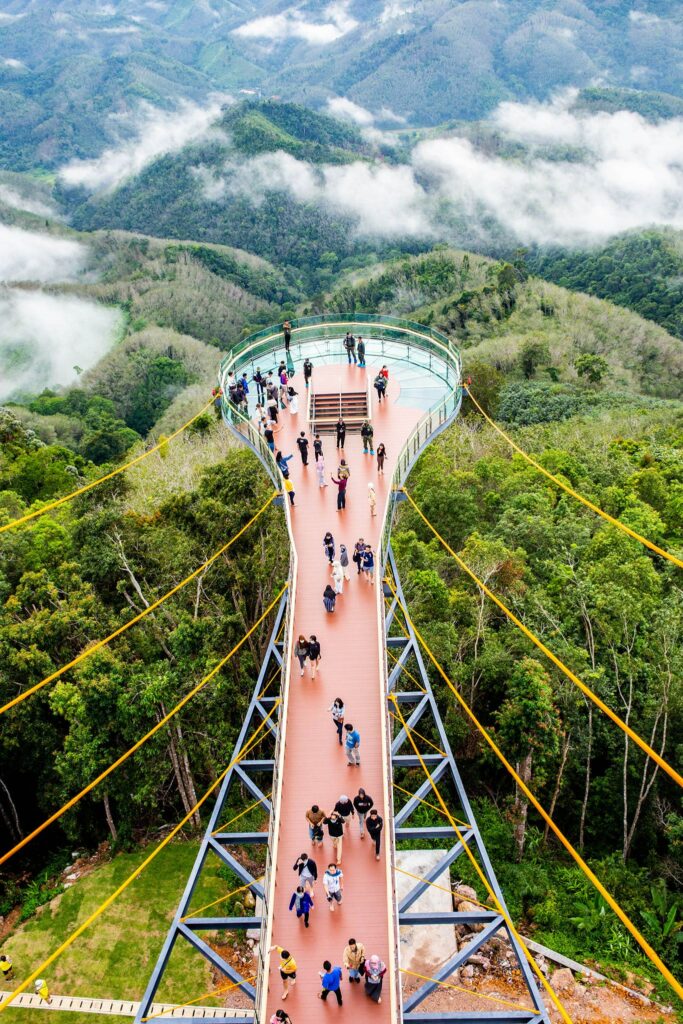
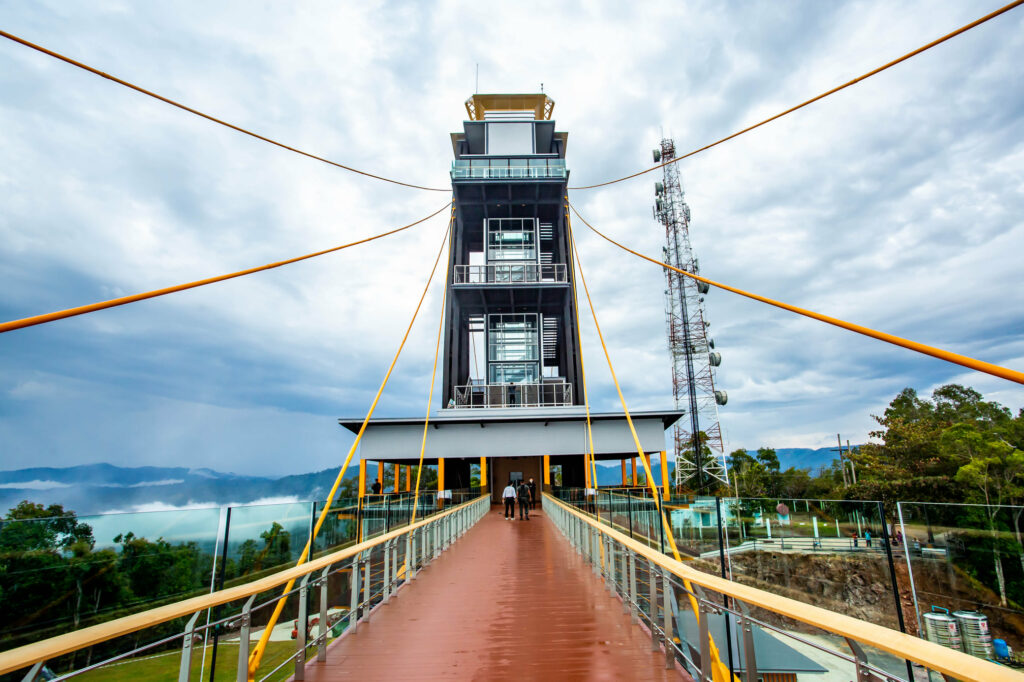
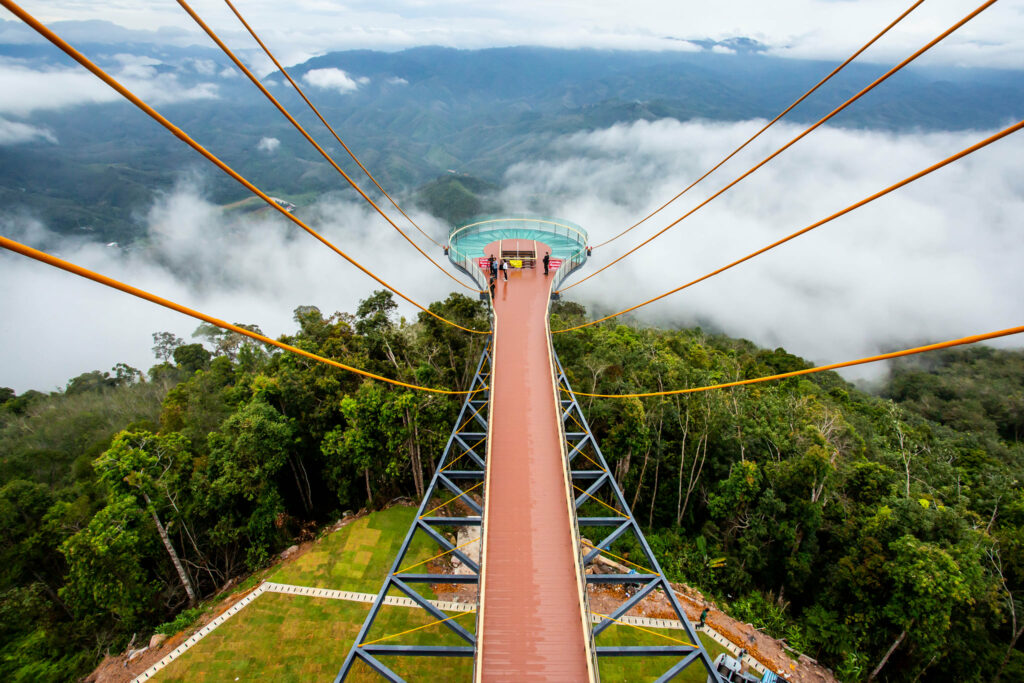
I couldn’t write an article about Betong without including this, but unfortunately, while we were there we did not visit, so below are some photos from the Tourism Directory of Thailand.
Betong Hot Spring
Located just outside Betong, there is also a beautiful hot spring and swimming pool. You can swim in it for free, but when you need to clean yourself after you will need to pay for the use of showers. There is a shop here and some beautiful nature to see nearby.
You can also apparently boil an egg in the water, but I didn’t personally try this myself as many report that it takes a very long time to do so.
Unfortunately, when we went, it was undergoing some kind of construction, and parts of it were closed, so we didn’t get to fully experience it. However, when fully open this is definitely a must-visit for a nice day. There are shops nearby, the nature is beautiful and you have a nice, warm pool.
Would recommend going in the afternoon as the water is hot, and so is the weather.
Thai-Malay Border
Close to Betong, you’ll find the Thai-Malay border, alongside some mountain roads, where you can see the border walls that surround the mountain.
Here is a very interesting spot if you’re interested in WW2 history, as this marks the spot where the first Punjabi-British troop was gunned down by the Royal Thai Police defending the town, during Operation Krohcol.
@wehatethecold Forgotten WW2 Battles – Thai Police vs Punjabi British 🇹🇭
♬ original sound – Harry&Iris
The troops were trying to get to a spot called “The Ledge” so they could blow it up, blocking the roads and therefore preventing a Japanese invasion of British Malaya.
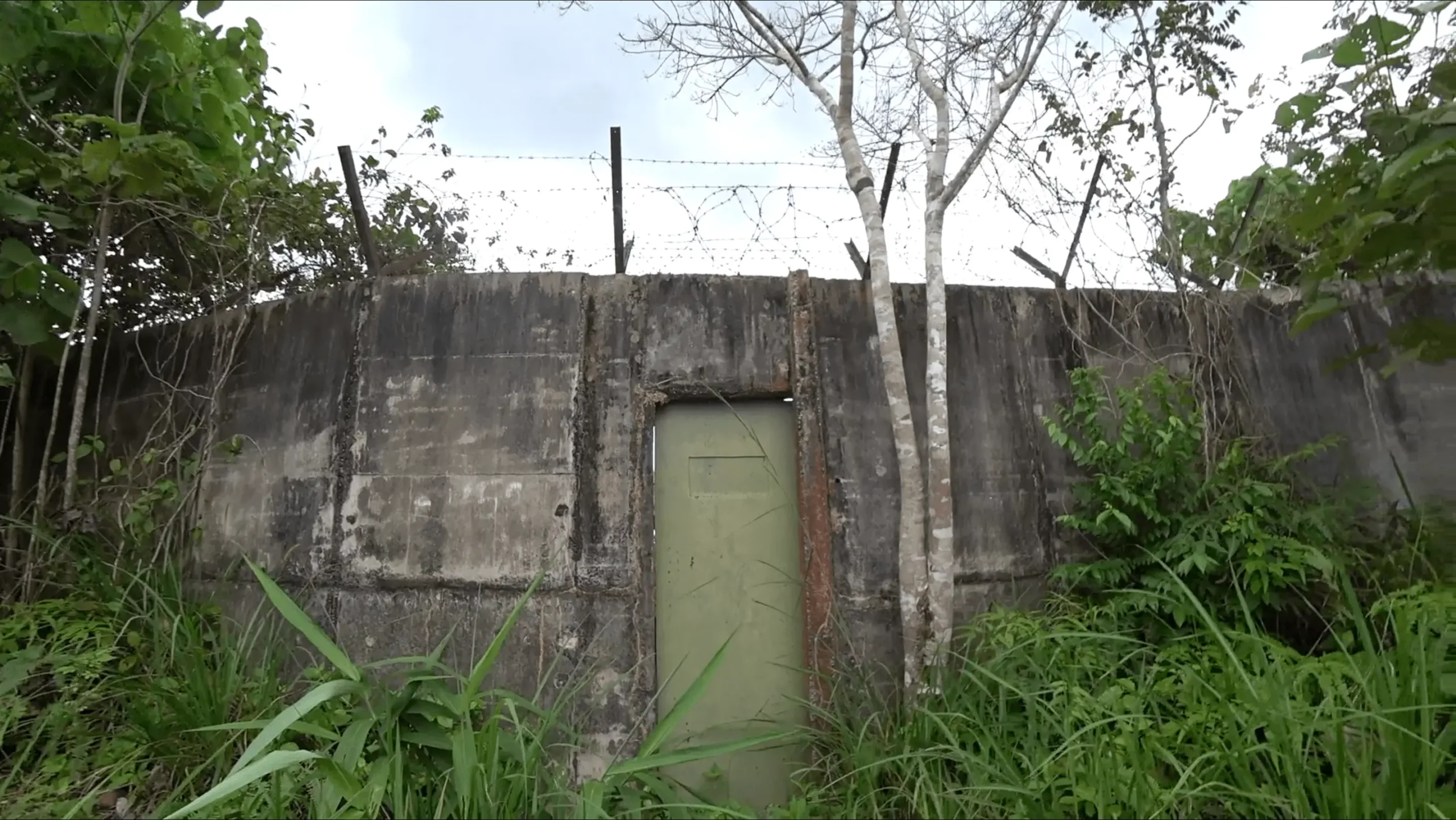
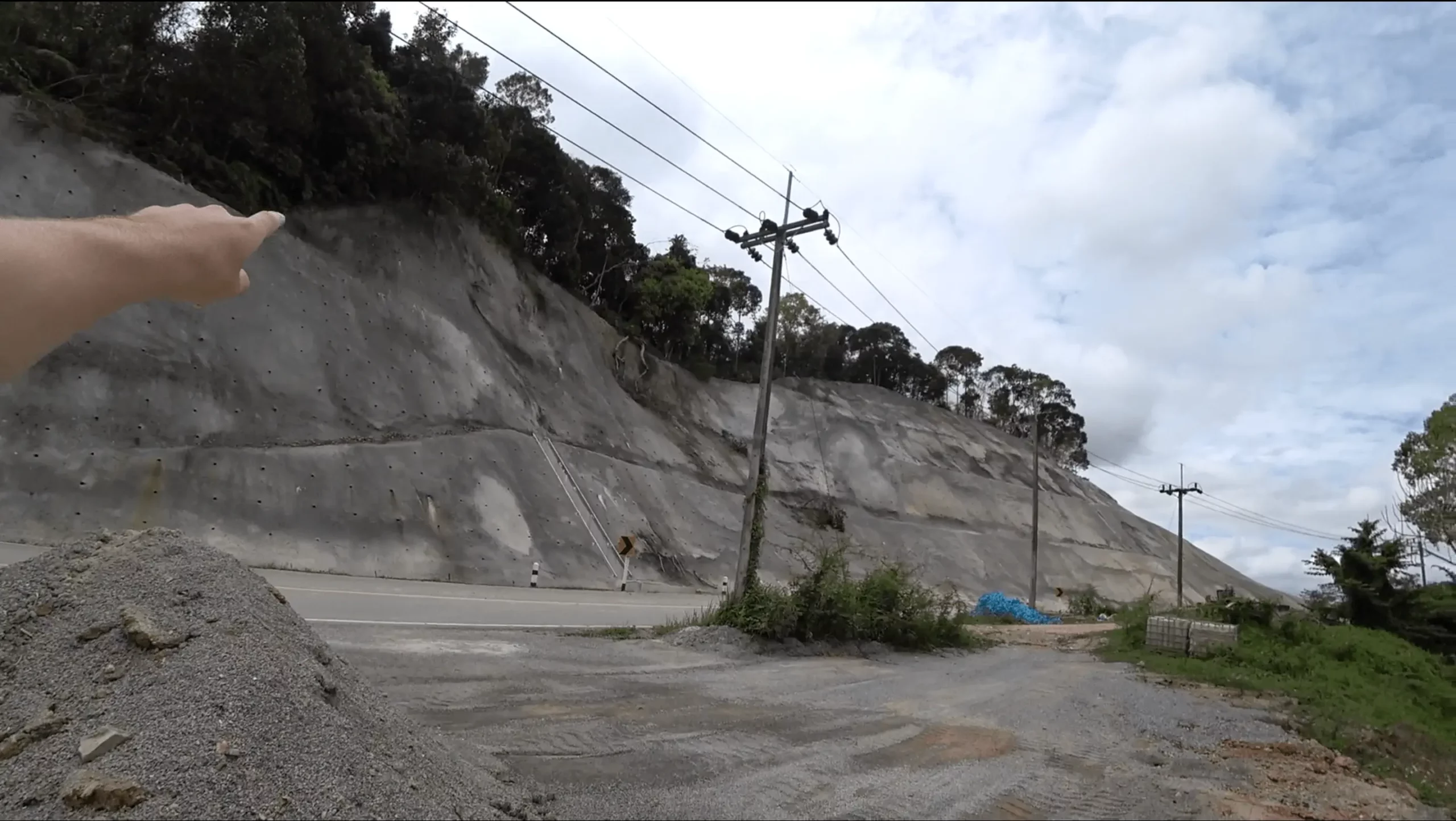
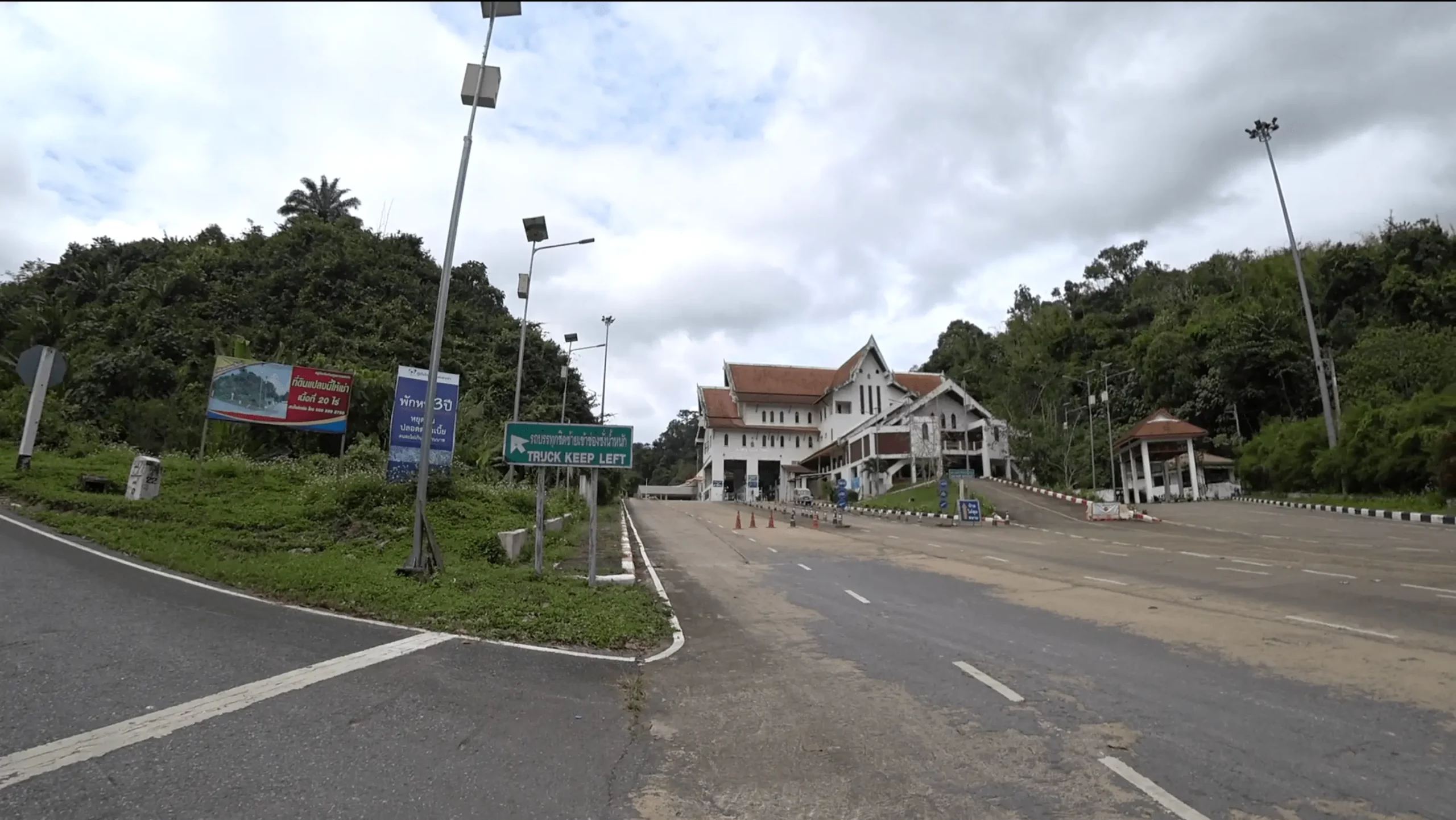
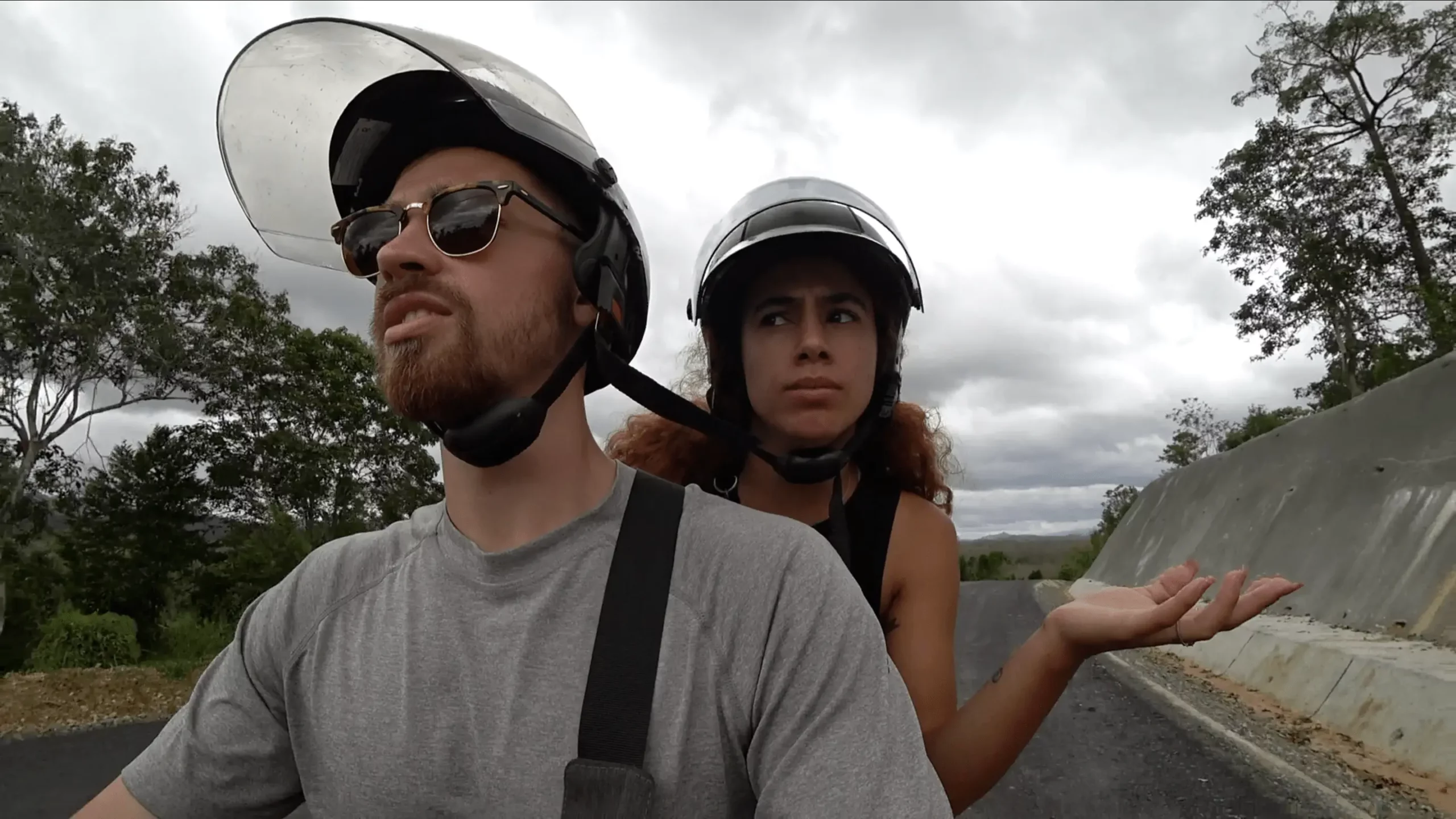
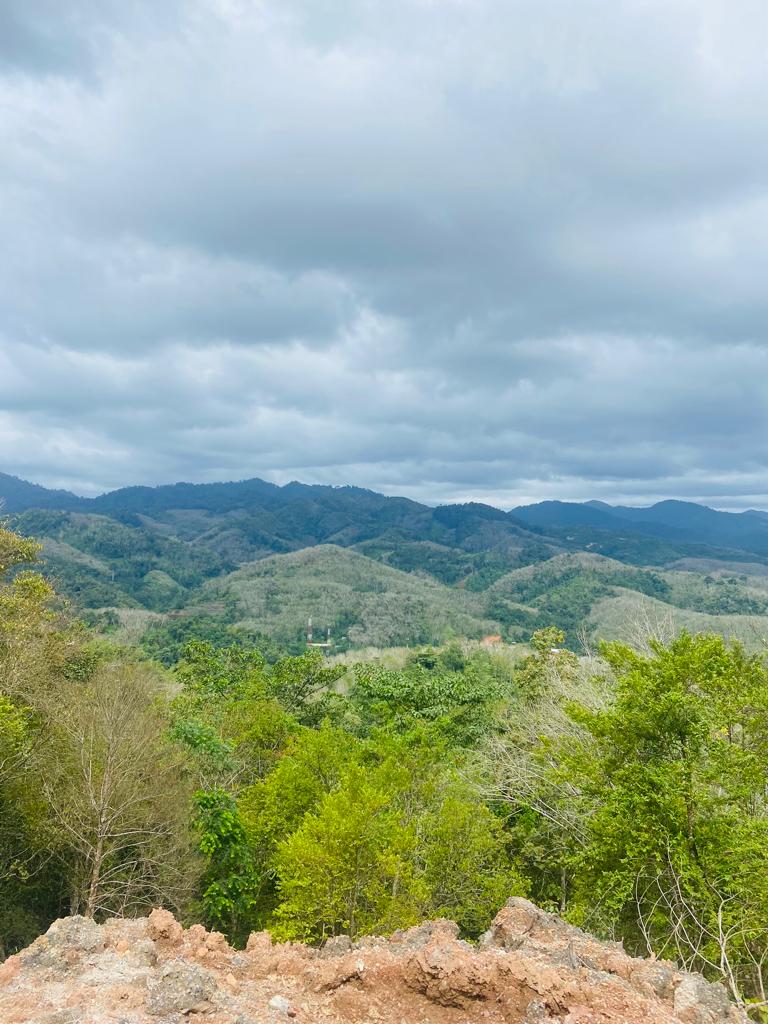
The surrounding nature is beautiful, and the drive through the mountains is incredible if you can rent a motorcycle to venture through it all. This is also the Southernmost Point of Thailand, and there are a few things to mark the spot. It’s not the biggest attraction, but it’s a great, lesser-known location to visit if you’re interested in the history.
Mongkolit Tunnel
This is the first and longest tunnel road built in Thailand in 2001. The tunnel is beautifully lit and when driven through it is almost like going into hyperspace in the Millennium Falcon. It was built to connect other areas of Betong with the main town.
On the other side of this tunnel, you will find a huge night market, alongside some murals that showcase the local airport, and an interesting garden that is lit at night, with some Chicken statues and other animals.
The other side of the tunnel is pretty disappointing, but the ride through the tunnel is great. If you want to stop the other side you can park your bike pretty much anywhere you see other bikes parked, for free!
Clock Tower
In the main square, there is a clock tower that was built originally to host a radio that was used to broadcast the news and other announcements to the town. It has stood for over 150 years and lights up at night to creates a beautiful atmosphere on the bustling street.
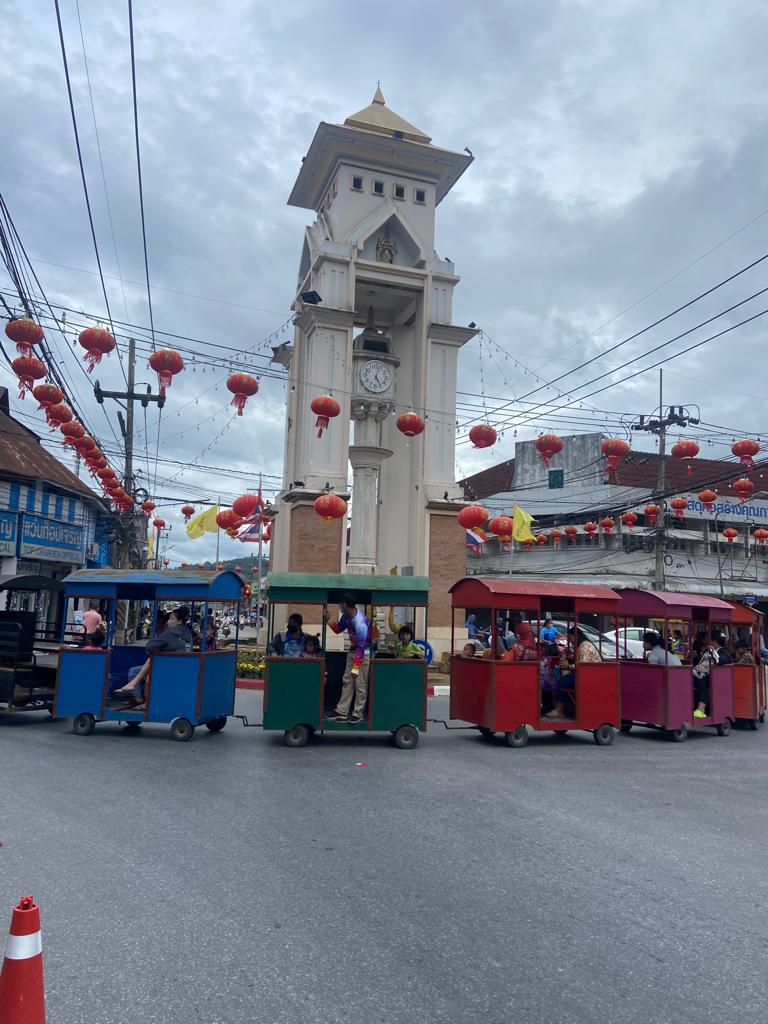
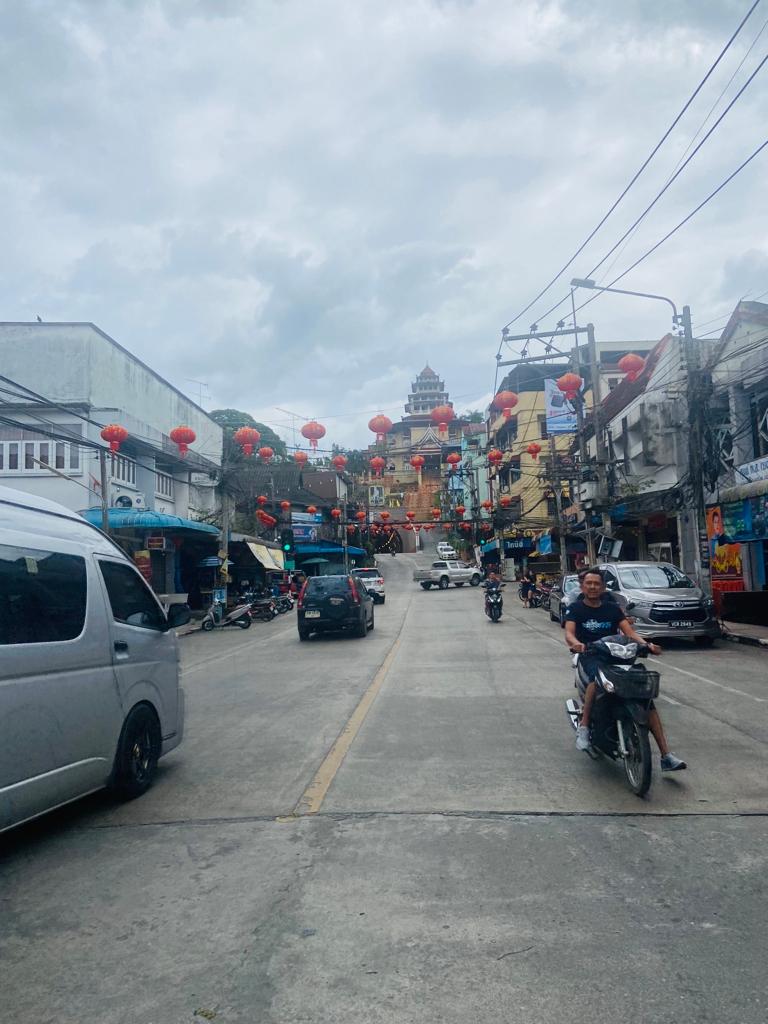
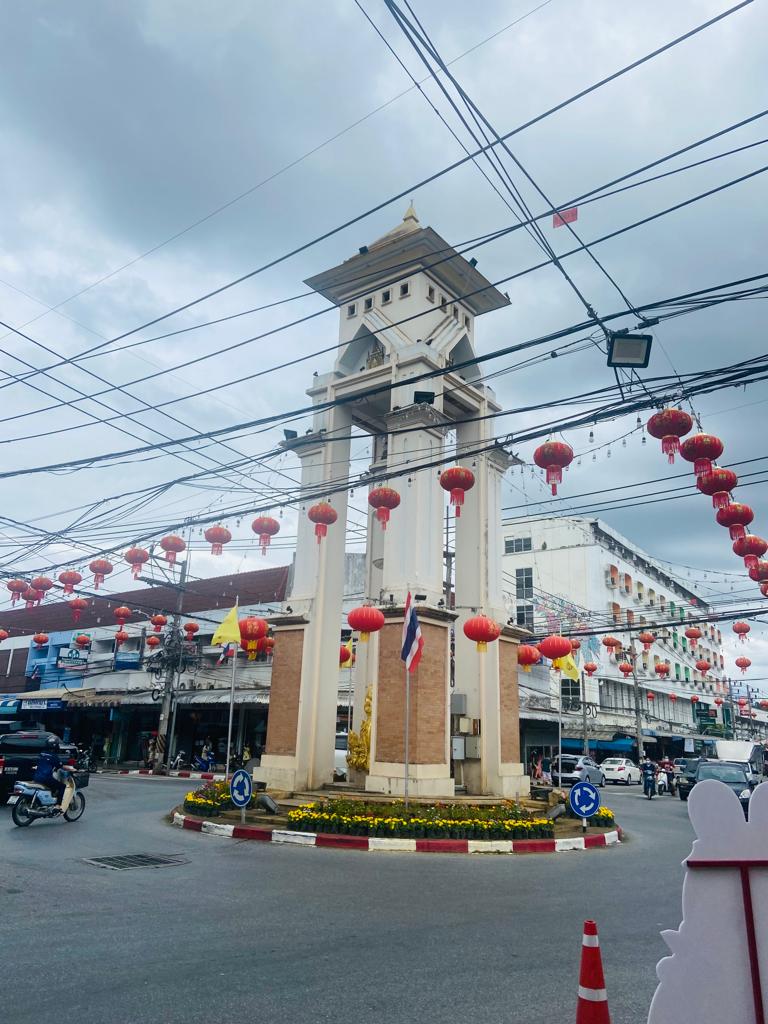
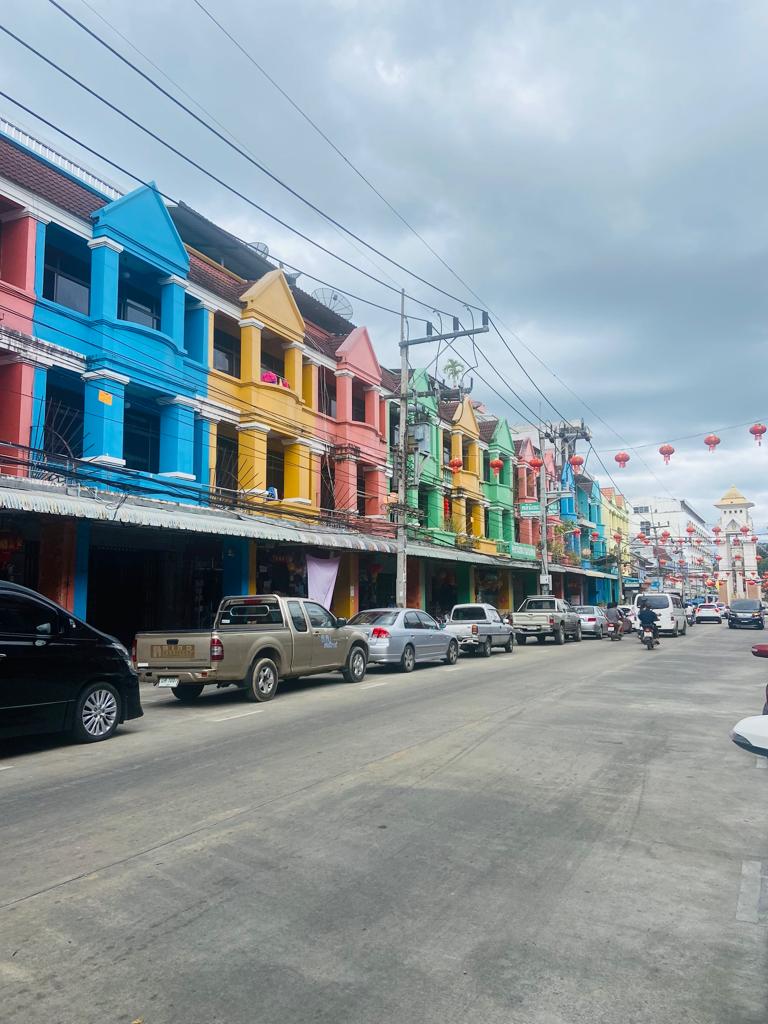
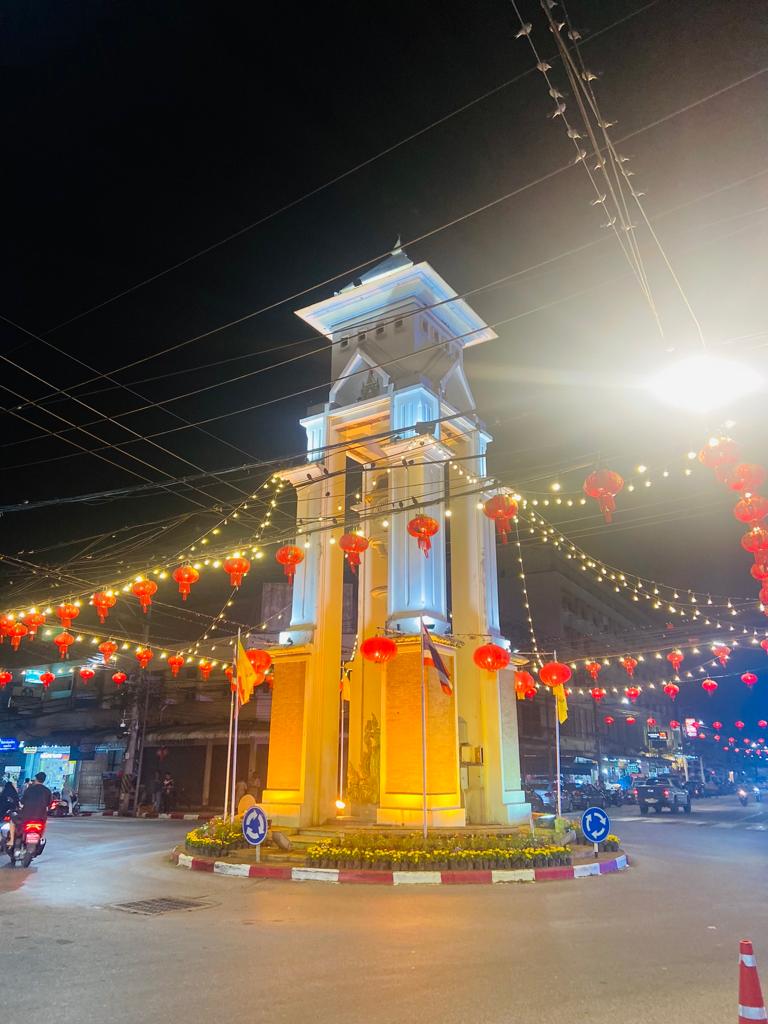
The clock tower marks the centre of the town, and you will find the main streets of Betong here. There are popular food stalls, restaurants shops, and hotels on this road.
If you’re in the area, you can try the local duck noodle soup from the food market area – it’s delicious and only costs 60 baht for a bowl.
Night Garden
Past the Mongkolit tunnel, you will find a small area with a small garden that has different statues of animals and other things. At night it is beautifully lit, and many people come here to eat at the night market stands and visit the tourist shops nearby.
It’s a pretty cool area, but in all honestly it’s not a “must-see”. You could easily skip this if you wanted to do more. However, it’s quite close proximity to the clock tower, so you’d be able to kill two birds with one stone and visit both. We took a look because of how close it is, but it’s nothing special.
If you want to stop here and have a motorcycle you can park your bike pretty much anywhere you see other bikes parked, for free!
Stadium
There is a stadium near the top of the town for the local football team Betong FC. You are able to visit and walk around the side of the grounds.
Here you’ll also find a gym you can pay 30 baht to use with weights machines, bikes etc. The gym doesn’t have any aircon and the equipment is pretty low quality, but it does the job if you need to work out while on holiday.
This is also a great spot to sit and eat food with friends. When we last went, many people were sitting on the sides of the road above the stadium, eating and drinking on the grass. It provides an amazing view of the stadium and parts of the town. We personally sat here and ate some takeaway ordered from the night market nearby.
The stadium is also very close to the Betong Museum and a beautiful little park where you’ll also find more food stands. Once again, it’s f*cking beautiful at night.
Duty-Free Market
Because Betong is so close to the border with Malaysia, there is a duty-free market you can shop at. There’s honestly not a lot here, you can get some shirts, sweets, and other things you’d expect at a duty-free market like alcohol.
If you’re not crossing back to Malaysia there’s no point purchasing duty-free goods from here, but it’s an interesting spot to look at if you have nothing else to do.
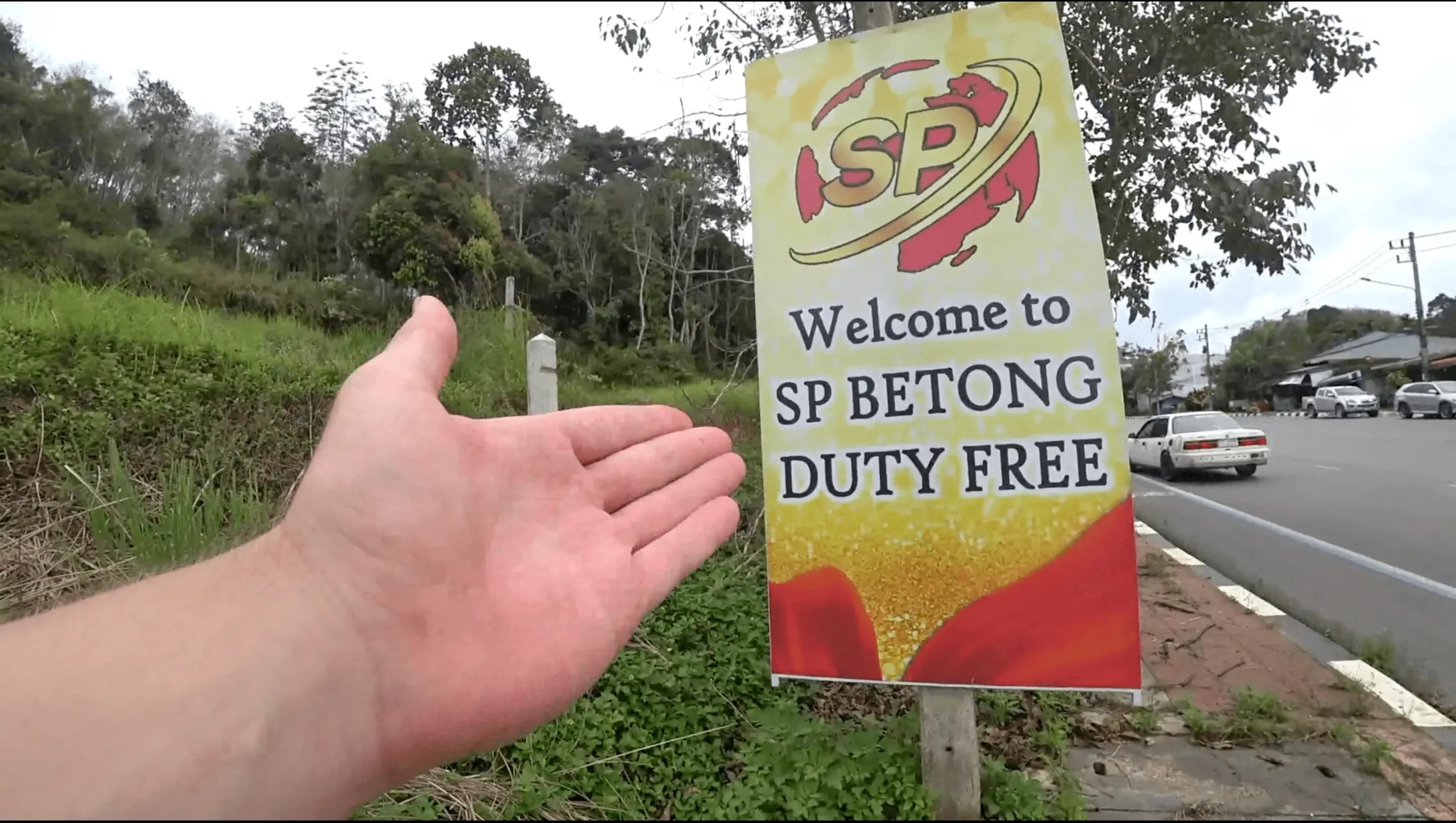
Getting To Betong
Getting to Betong is quite difficult unless you’re coming from Malaysia.
There are two ways you can travel to Betong:
- Get a train to Hat Yai, and then a Minibus to Betong
- Fly to Hat Yai any airport in Thailand (Betong’s airport is currently closed)
Flying To Betong
An airport was recently opened in Betong, but the flight route has been canceled due to low demand. When we arrived in Betong, the airport was closed, so no flights currently go to Betong right now. You can however get a flight to Hat Yai, and then from there get a Minibus down to Betong. This is the quickest way to get there, but the most expensive.
Getting The Train & Minibus To Betong
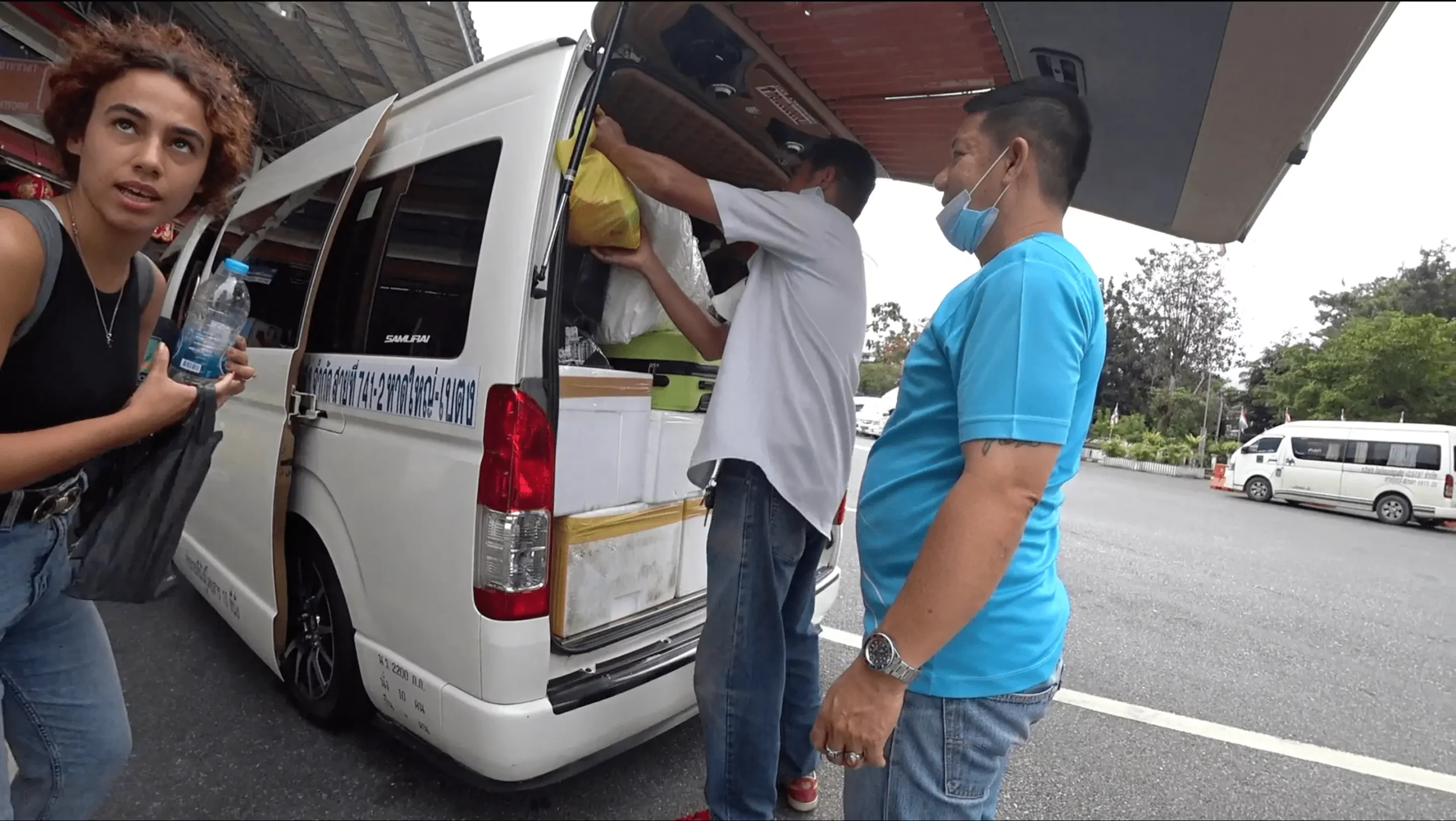
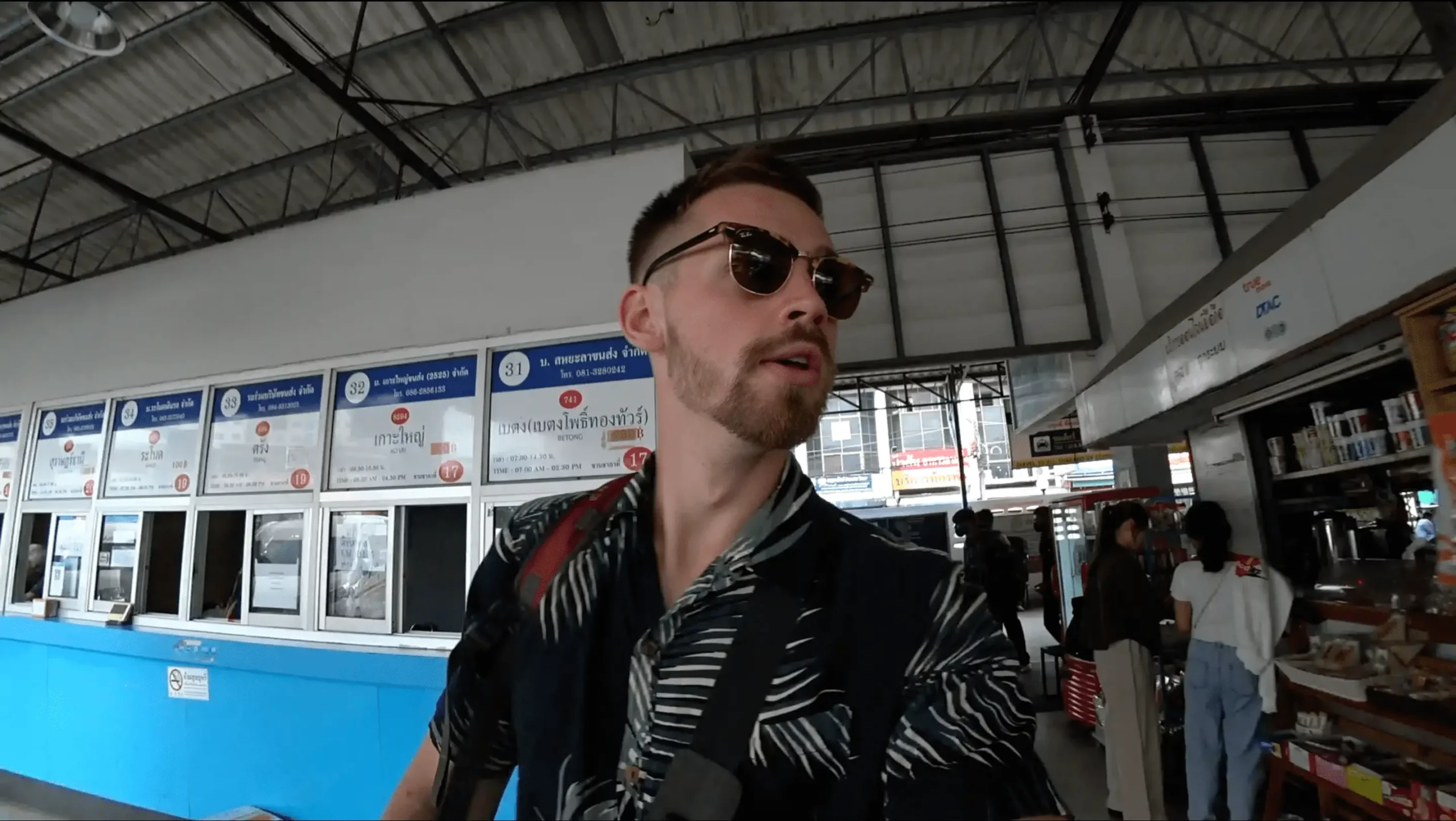
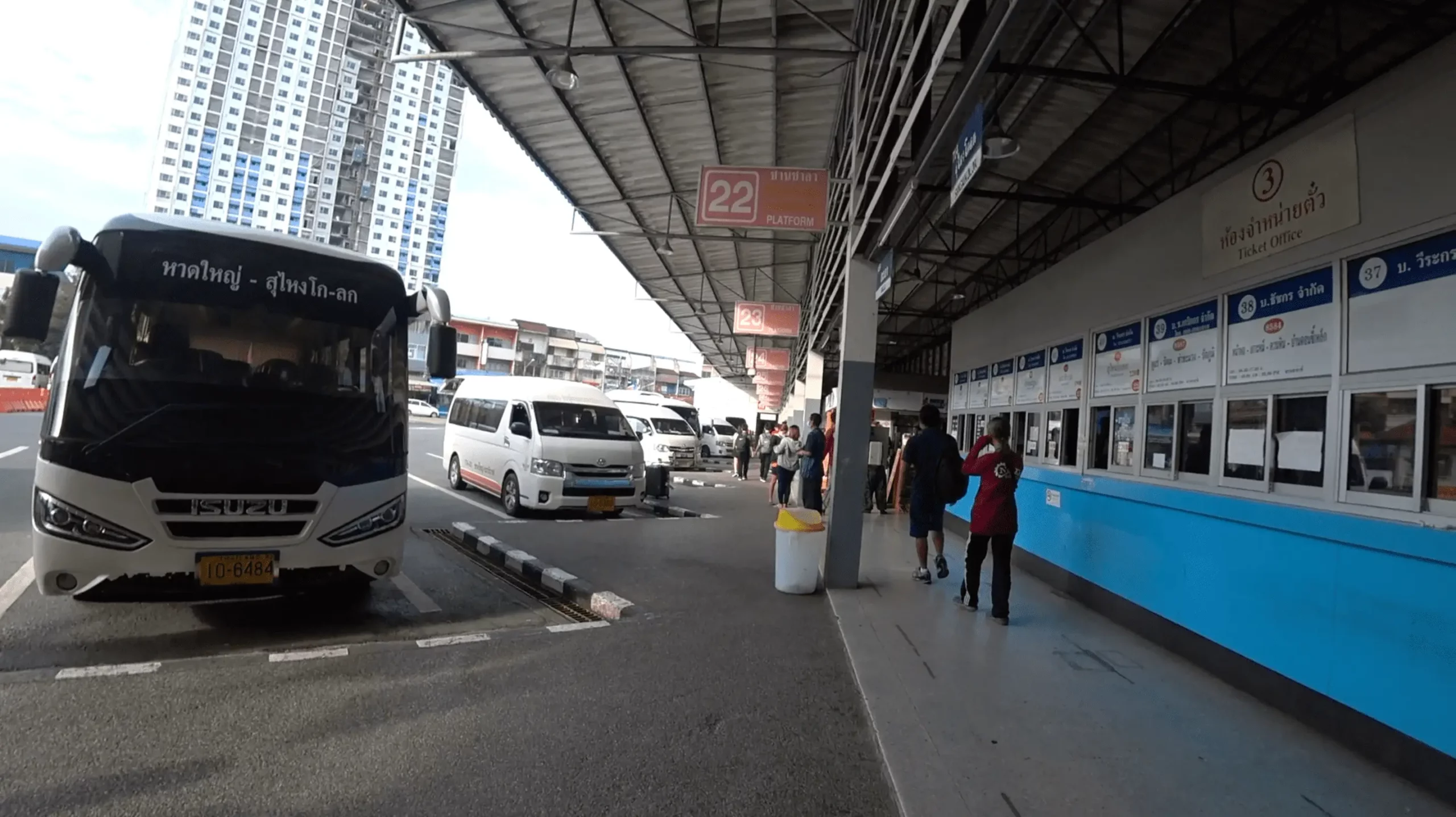
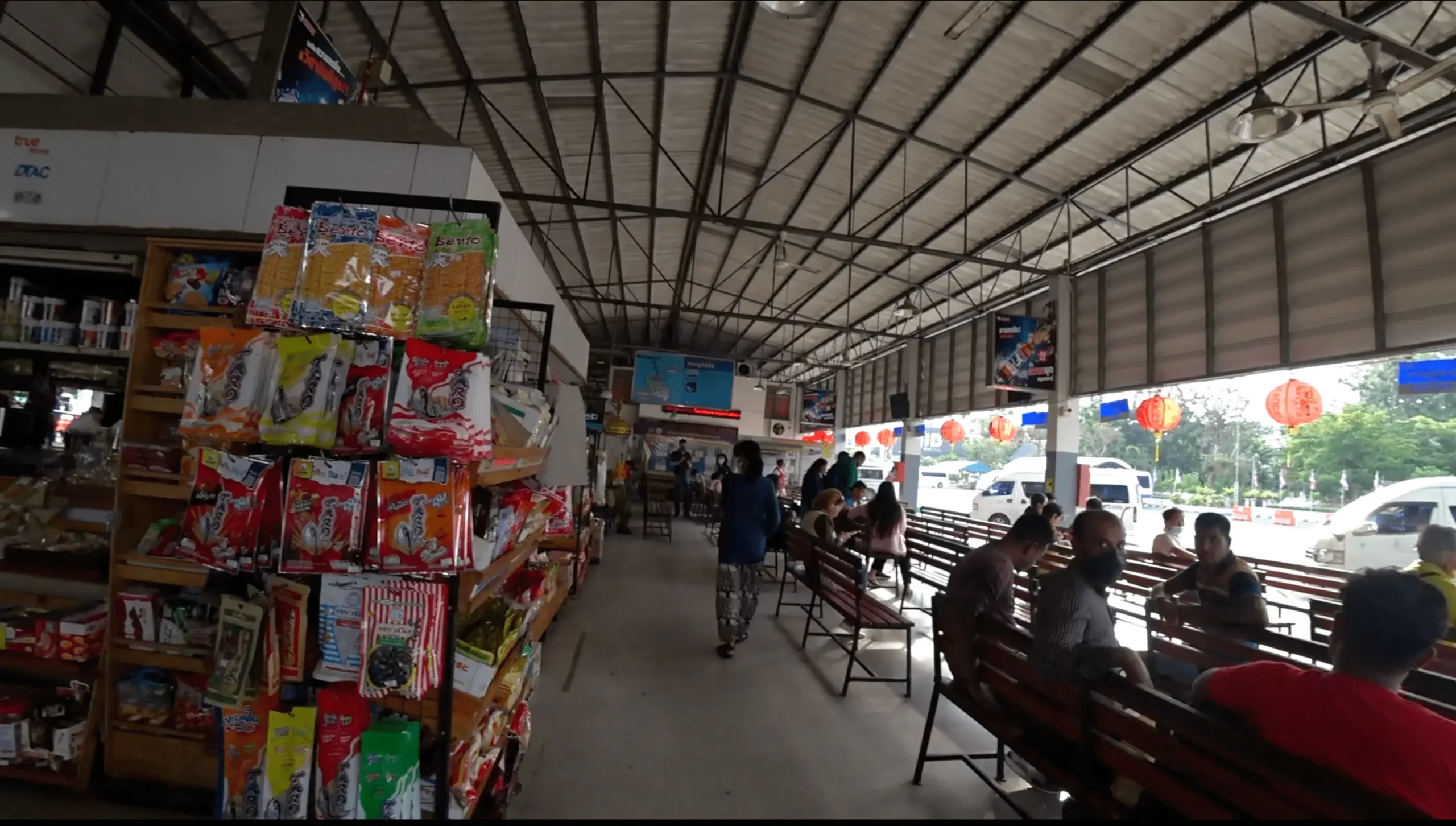
If you want to save some money, get the train to Hat Yai, then get a Minibus from Hat Yai’s bus station. A Minibus ticket will cost you 200 baht ($5).
We personally took a local, hard wooden seated train from Bangkok to Hat Yai, which cost 70 baht total ($2) to save money. Then we went to Betong using a Minibus from the bus station in Hat Yai.
The Minibus won’t leave until it is full, so you might have to wait around for the bus to completely fill up. However, if you want to try South Thailand’s indigenous medicine, you can head to a shop nearby with a hilarious sign in which Popeye is holding Kratom leaves instead of spinach.
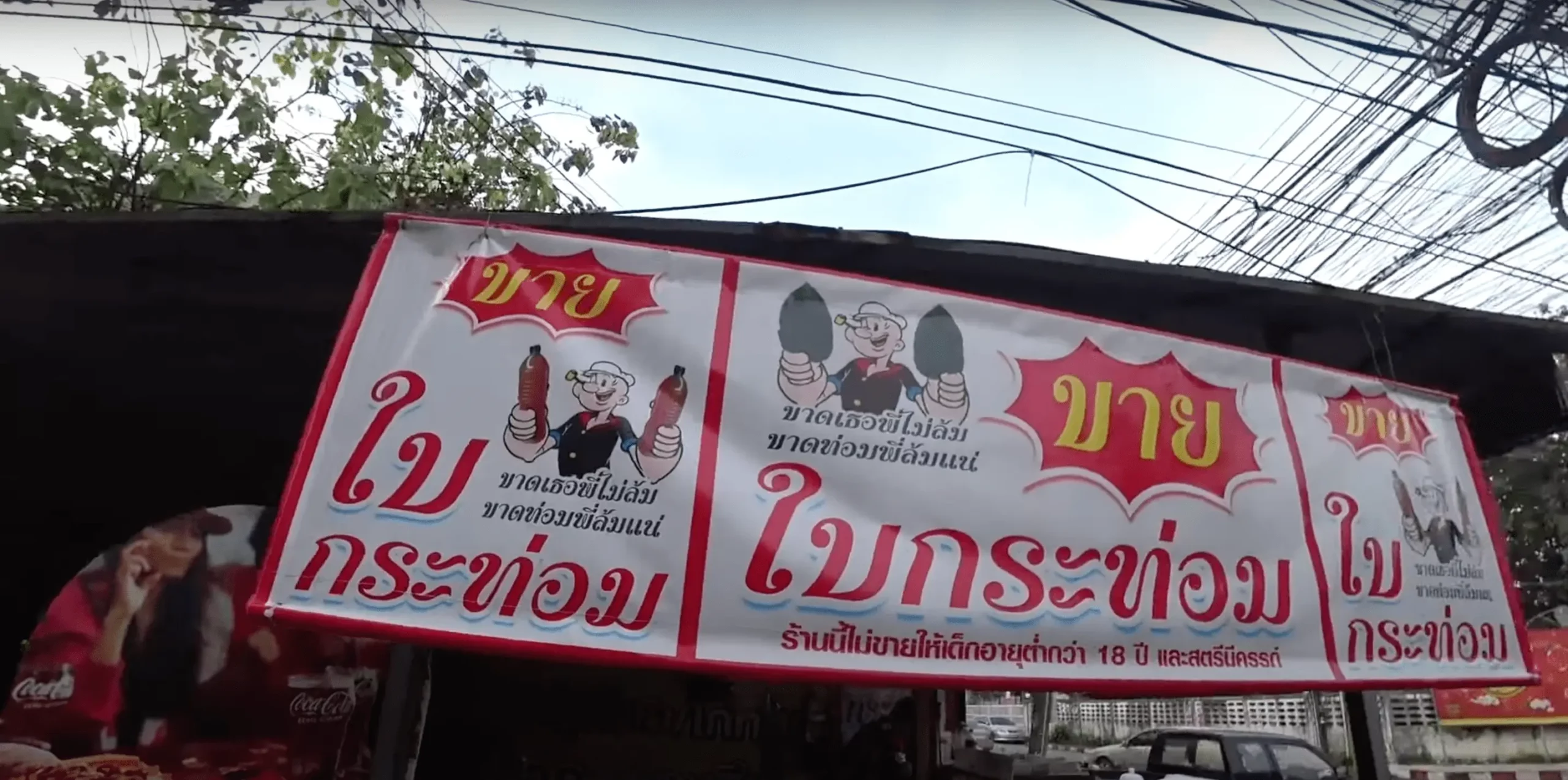
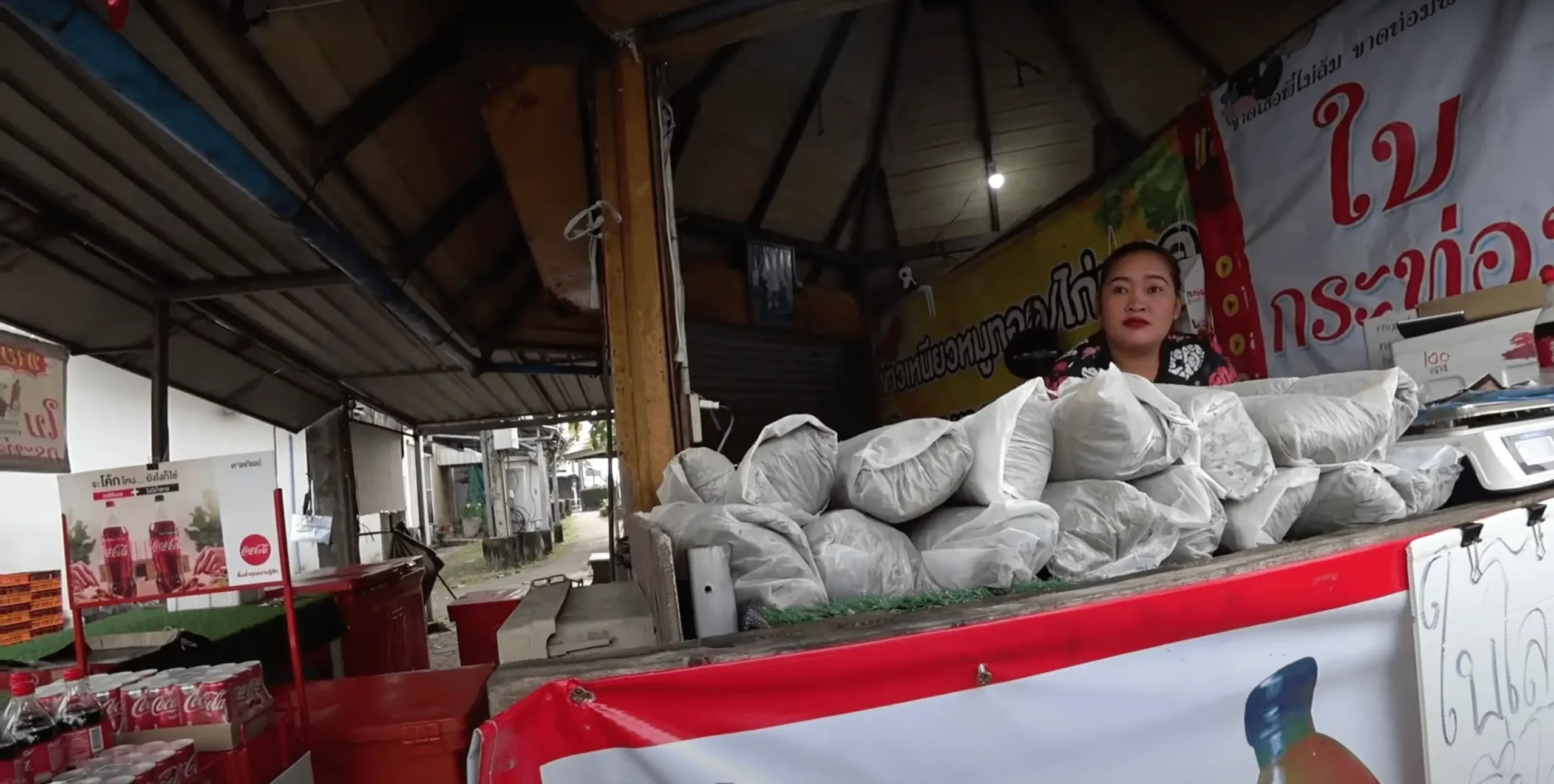
Getting Around Betong
Due to the decline in tourism, getting around Betong is quite difficult. There is no Bolt, or Grab there yet and there are very few Tuk Tuks lying about. To get a Tuk Tuk you will have to hail one down. I am not sure of the prices as I didn’t travel by Tuk Tuk here.
You can additionally travel very easily and cheaply by Songtaew around Betong. These look like pickup trucks that have a back for passengers. Songtaews usually charges 20-30 baht per trip, but this entirely depends on the location. Do not let a Songtaew driver rip you off, you should be charged no more than 80 baht for a ride.
My recommendation is to rent a motorcycle, you can get them from a local rental shop for 300-500 baht per day, depending on your rental period. If you book for longer, you will get a bigger discount; shorter bookings will cost more. You usually receive a helmet with your booking and a full tank of petrol, it is expected you’ll bring it back with a full tank.
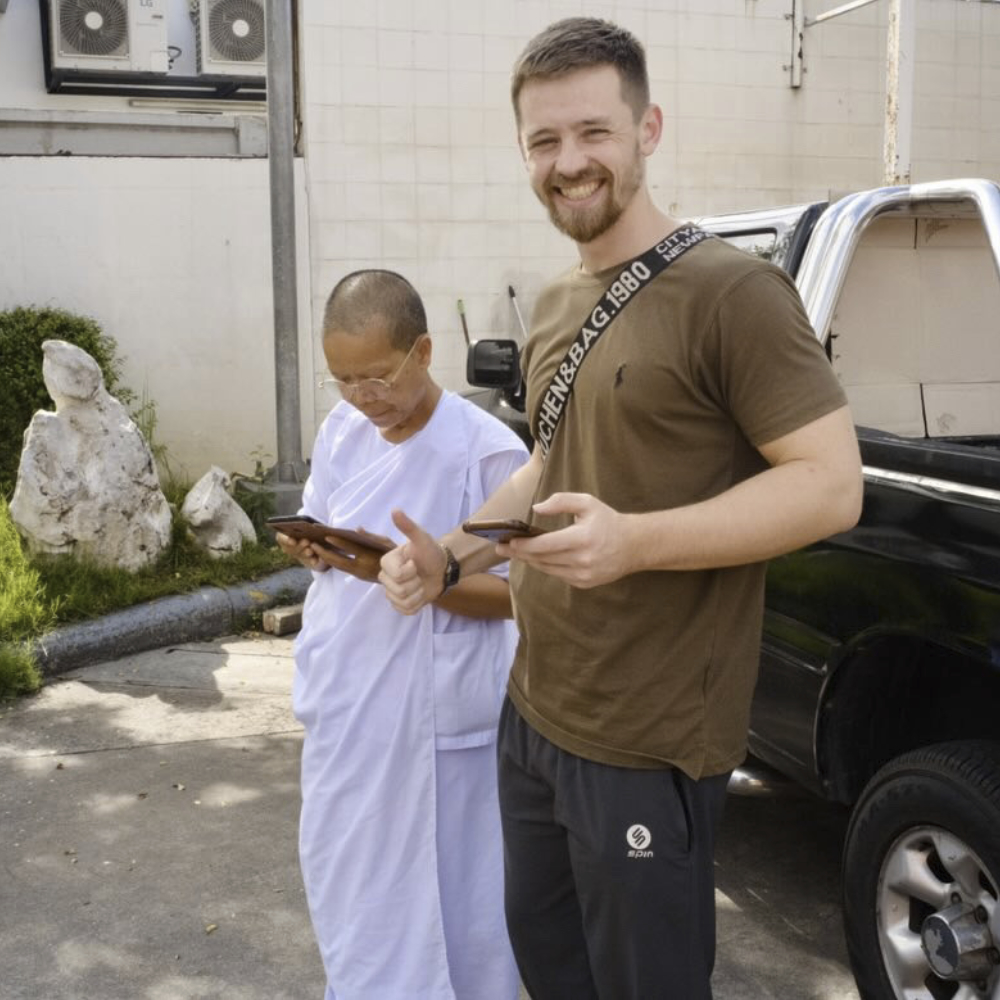
I’m Harry – and I was tired of the same old “10 best places I’ve never been but I’m writing about for some reason” blog posts. So… I’m a young traveller on a mission to travel the world and share my true, unfiltered experience, including all the gristly details. From packing my life into one bag for a year, to traveling Vietnam by motorbike, to sorting out Visas for specific countries – I’ve done it all, am doing it all and only give my advice on things I have done – not regurgitated cr*p from another source *cough* most publications *cough*. So bear with us! This project will take some time to grow, and will take a fair bit of money. But I’m determined to make it the single best source of information about traveling on the internet.
